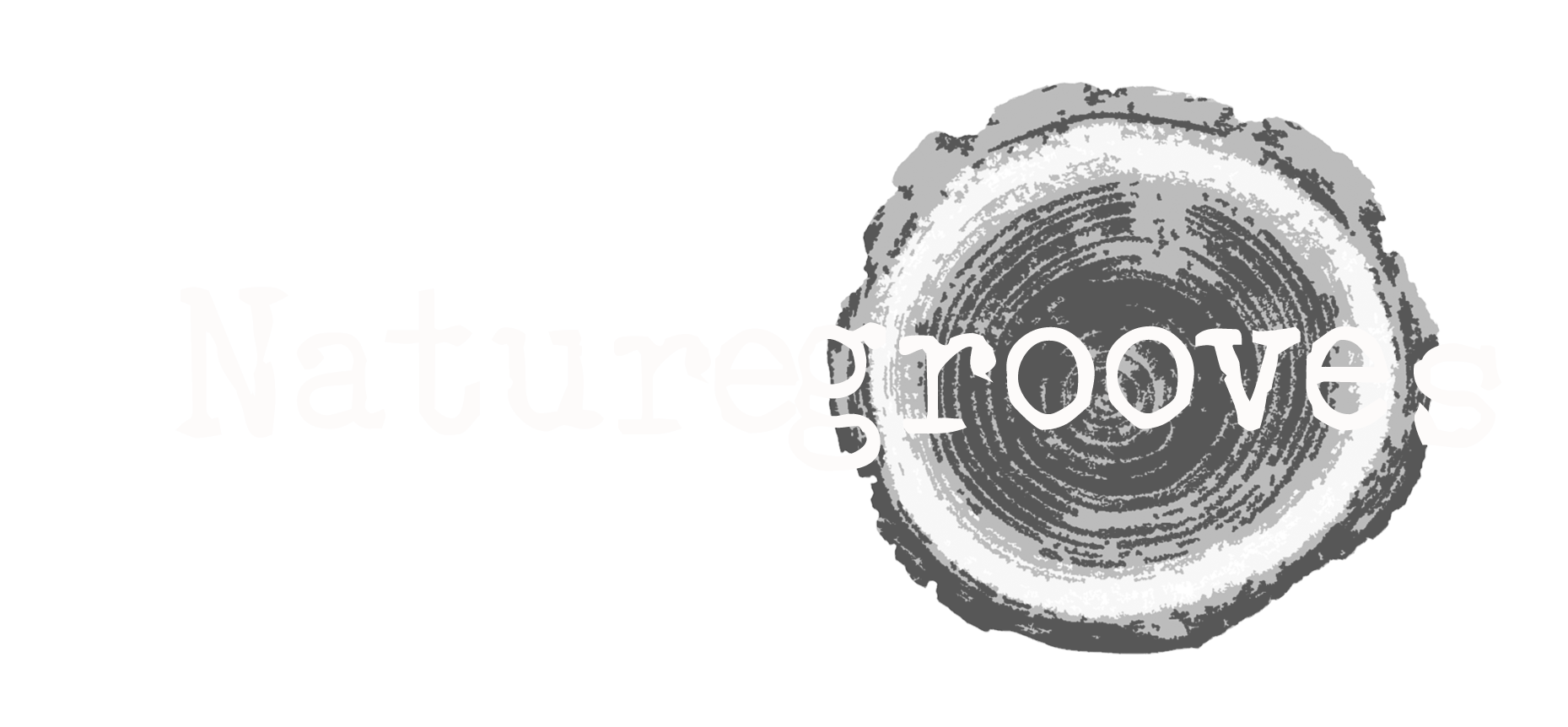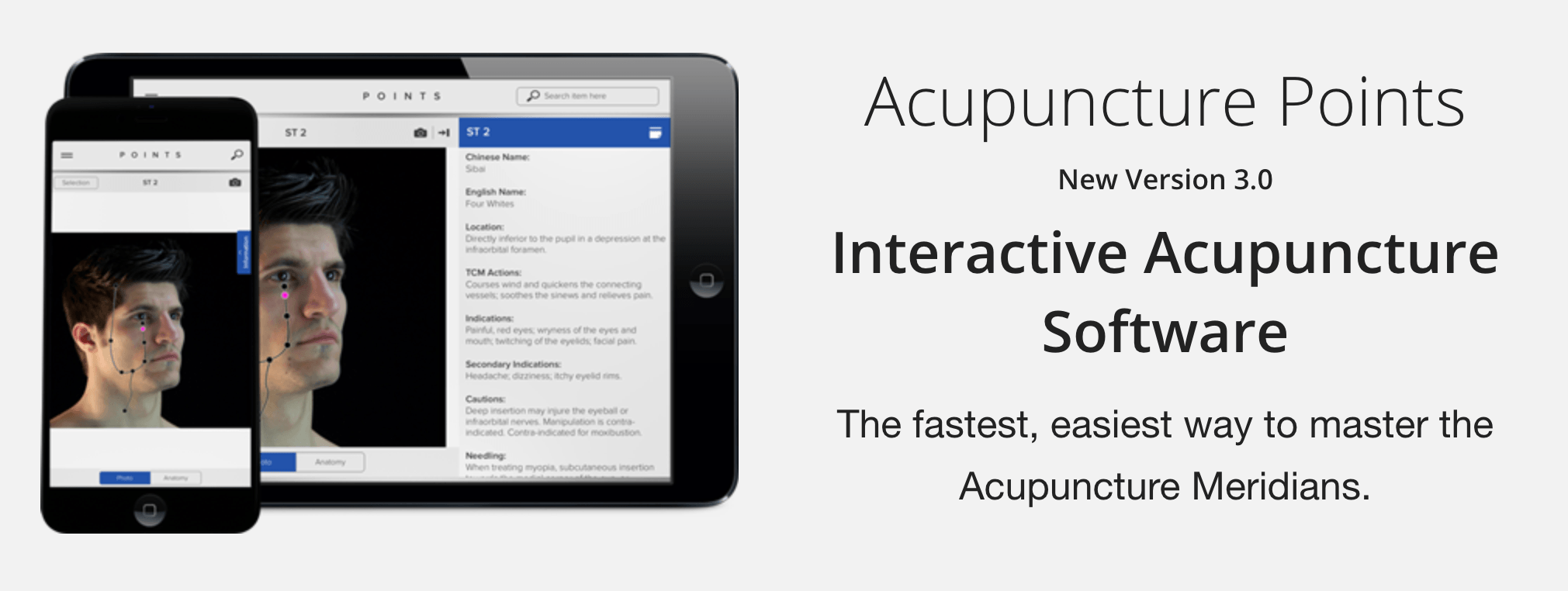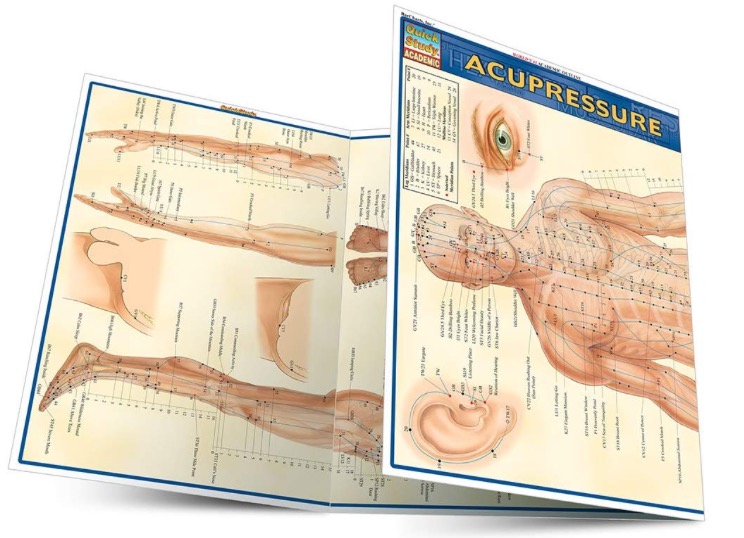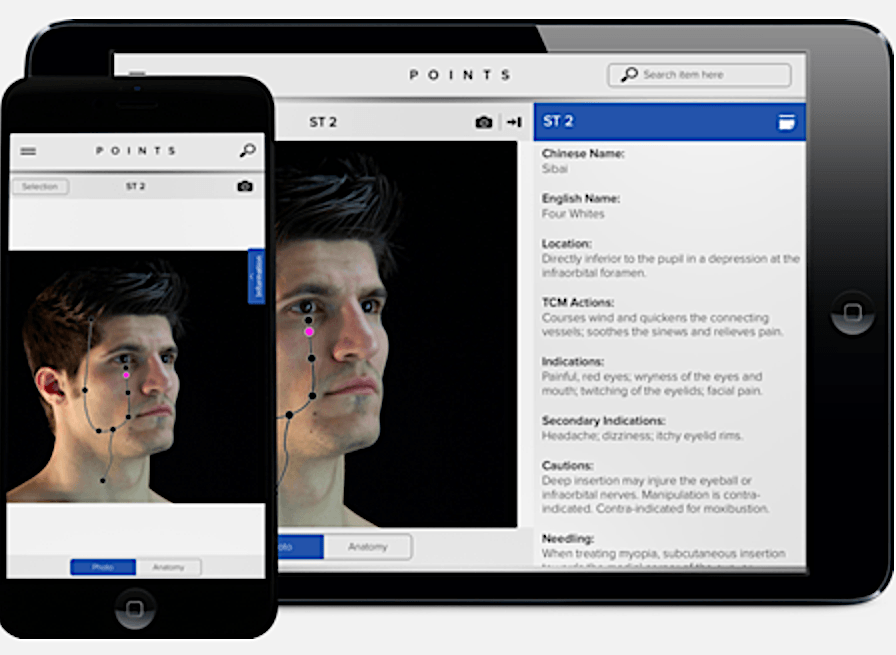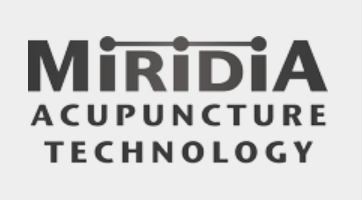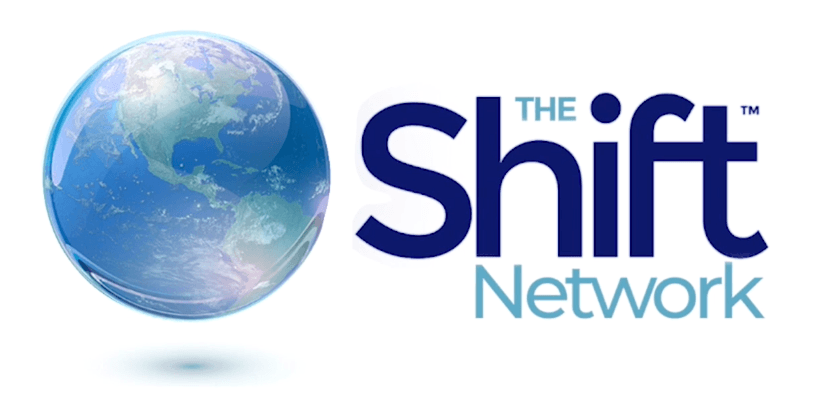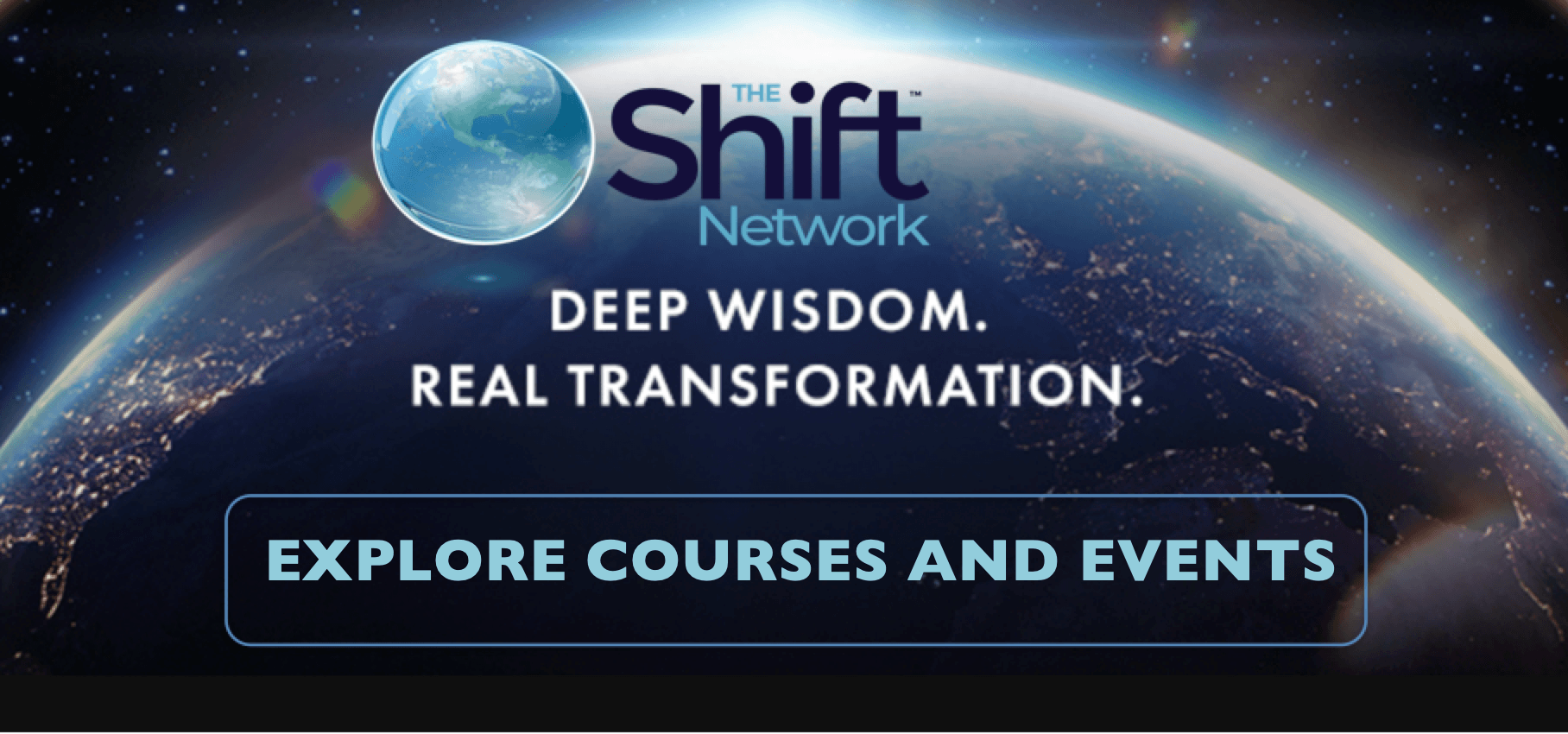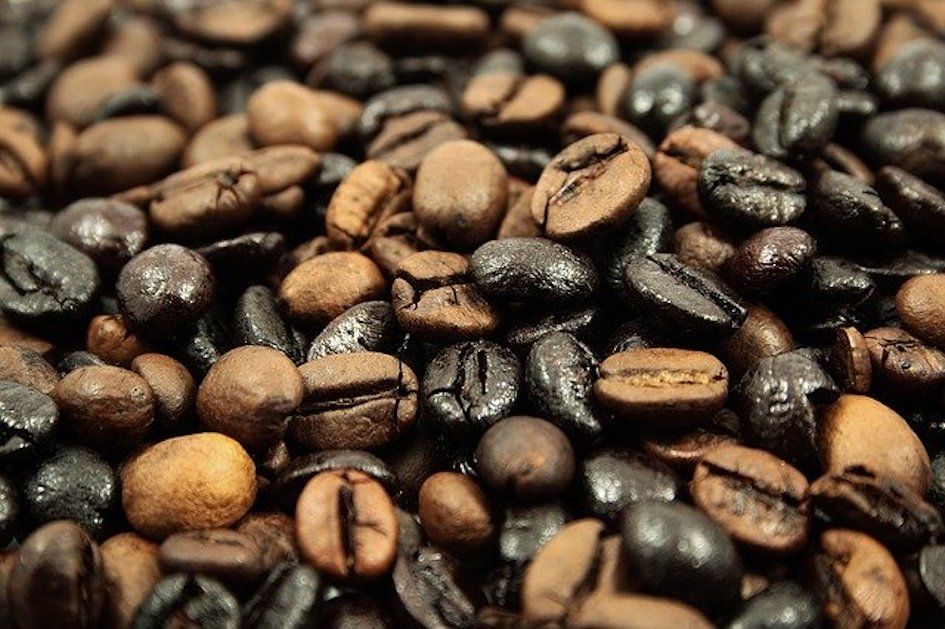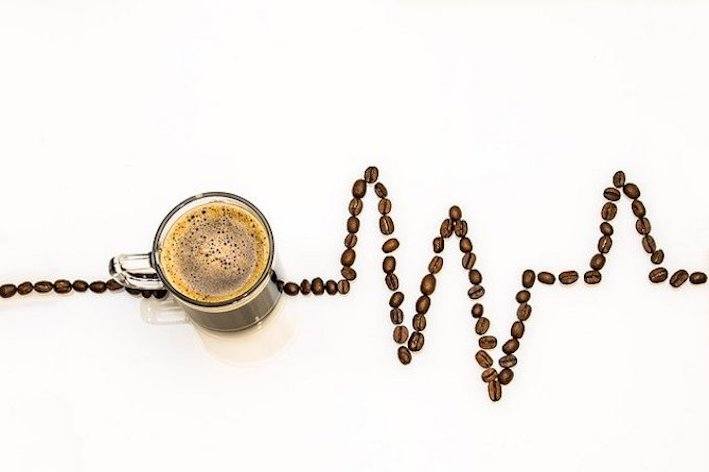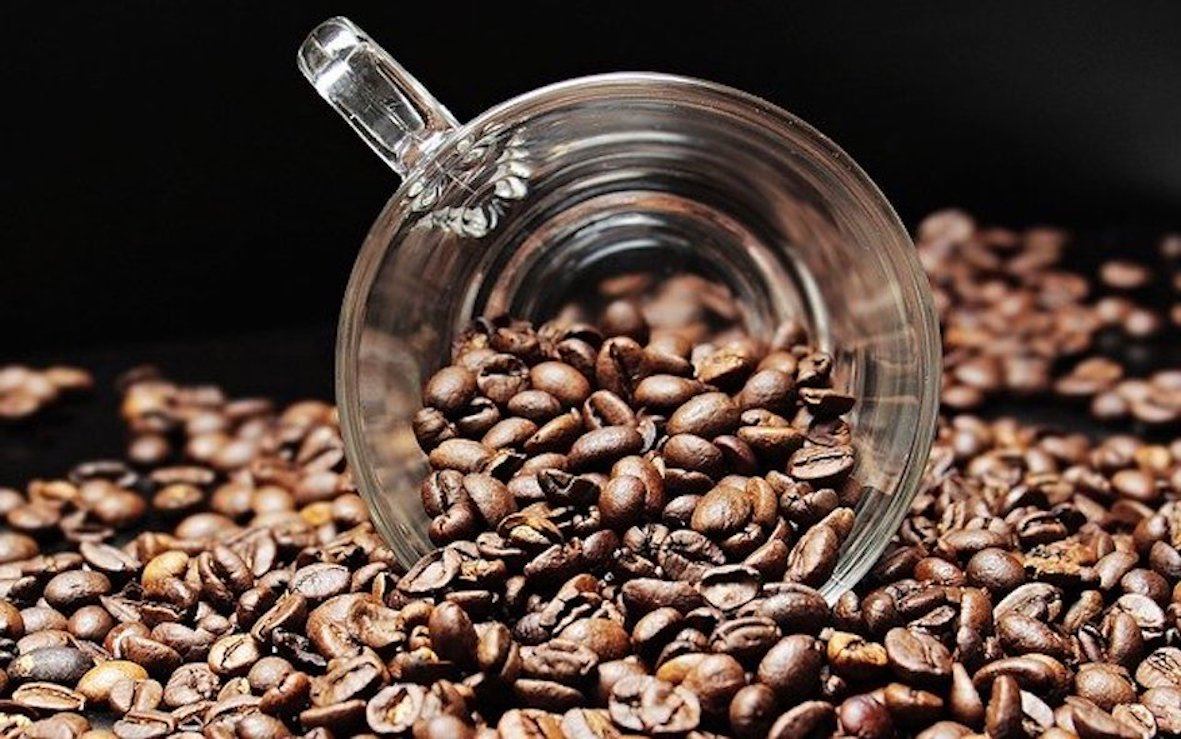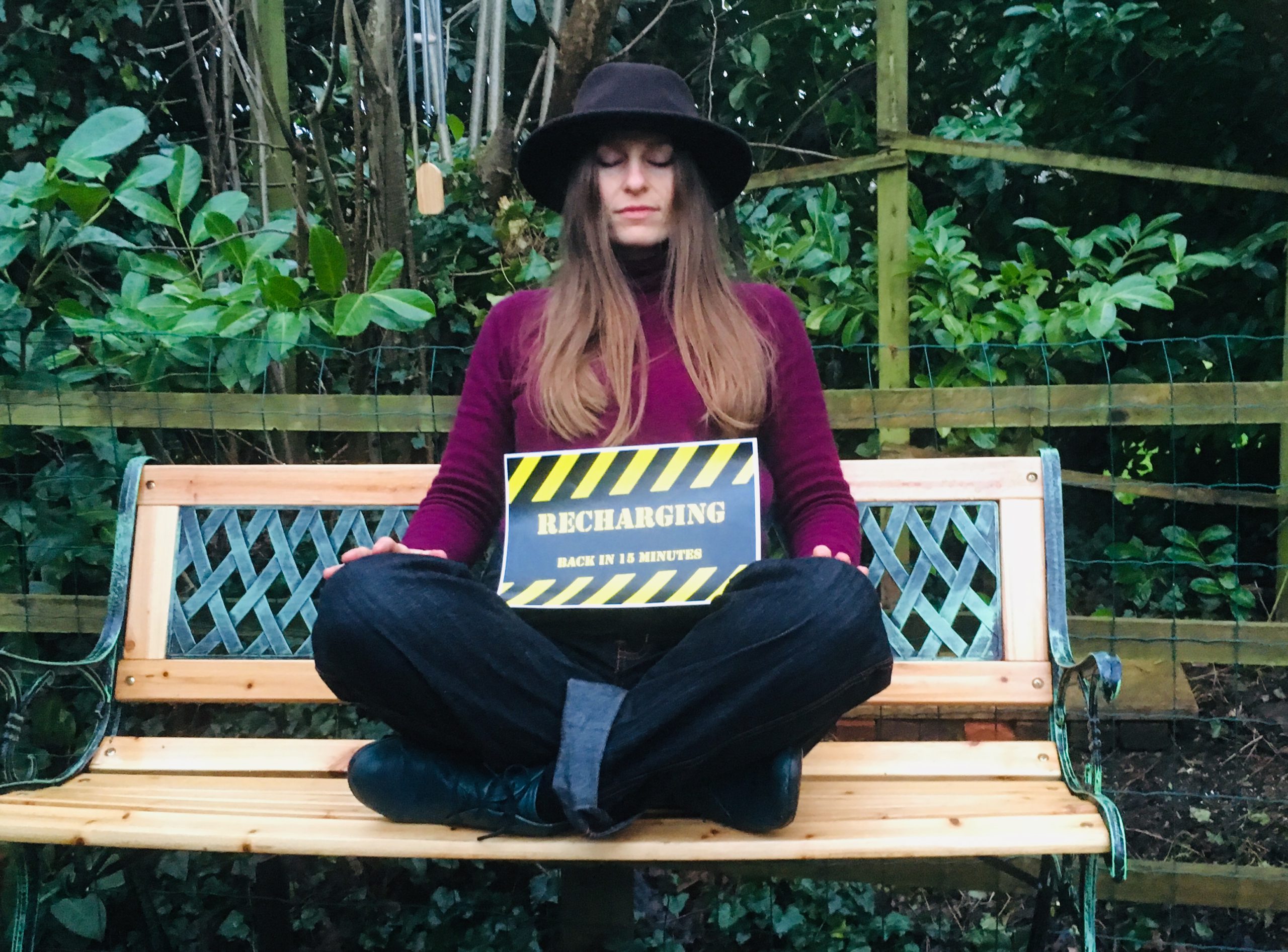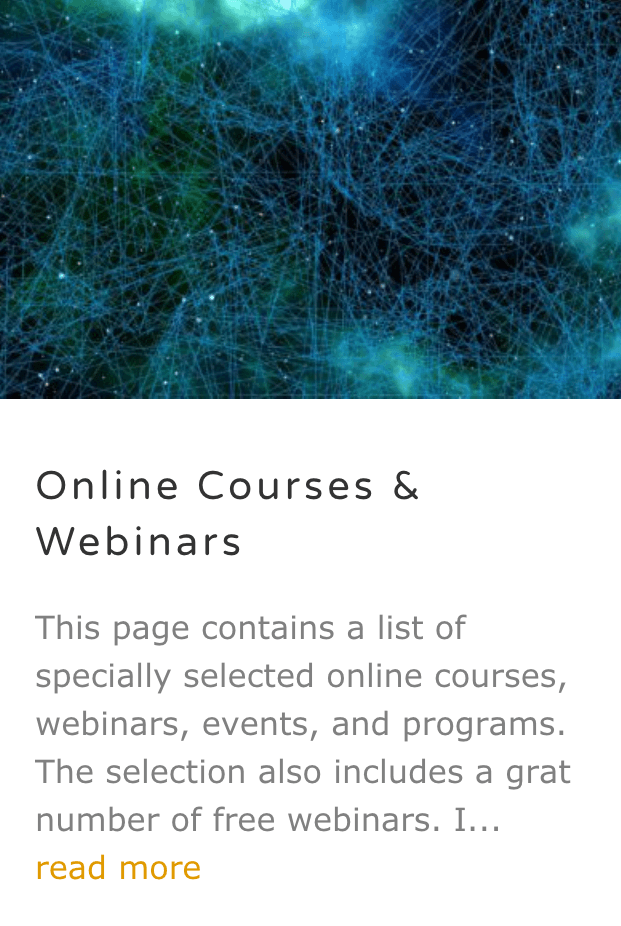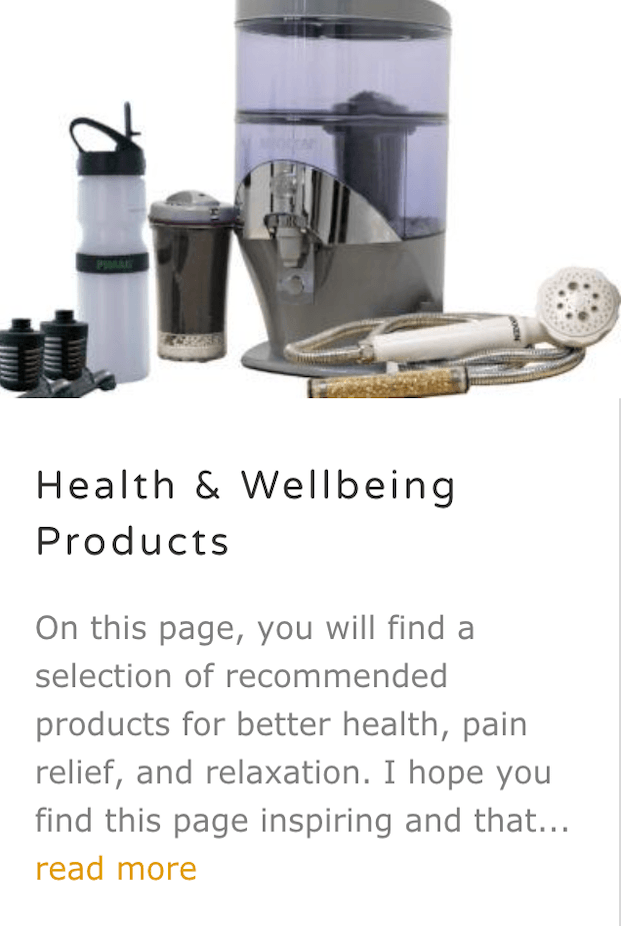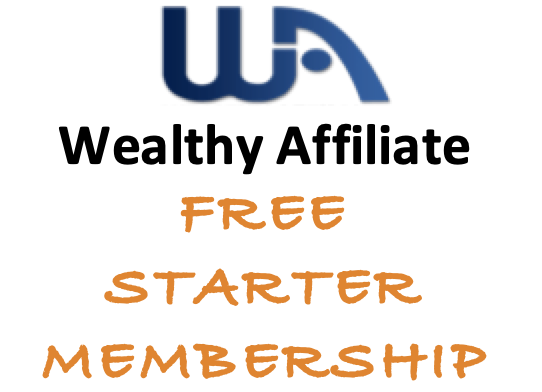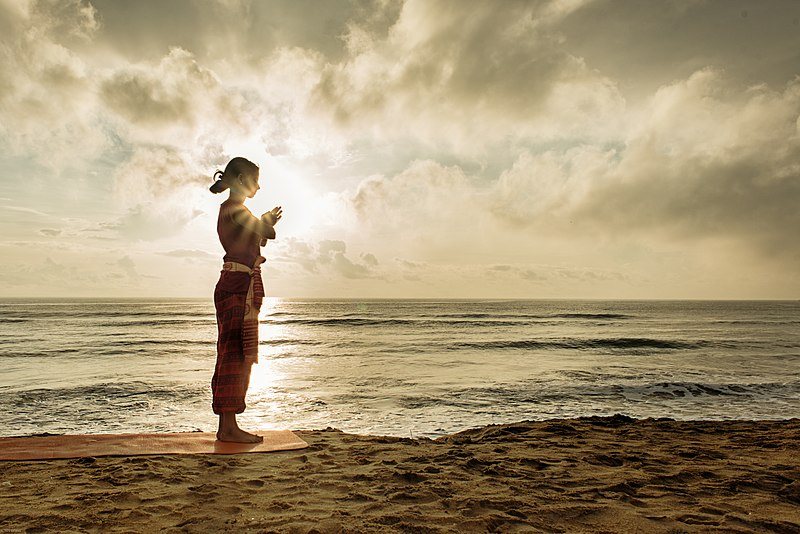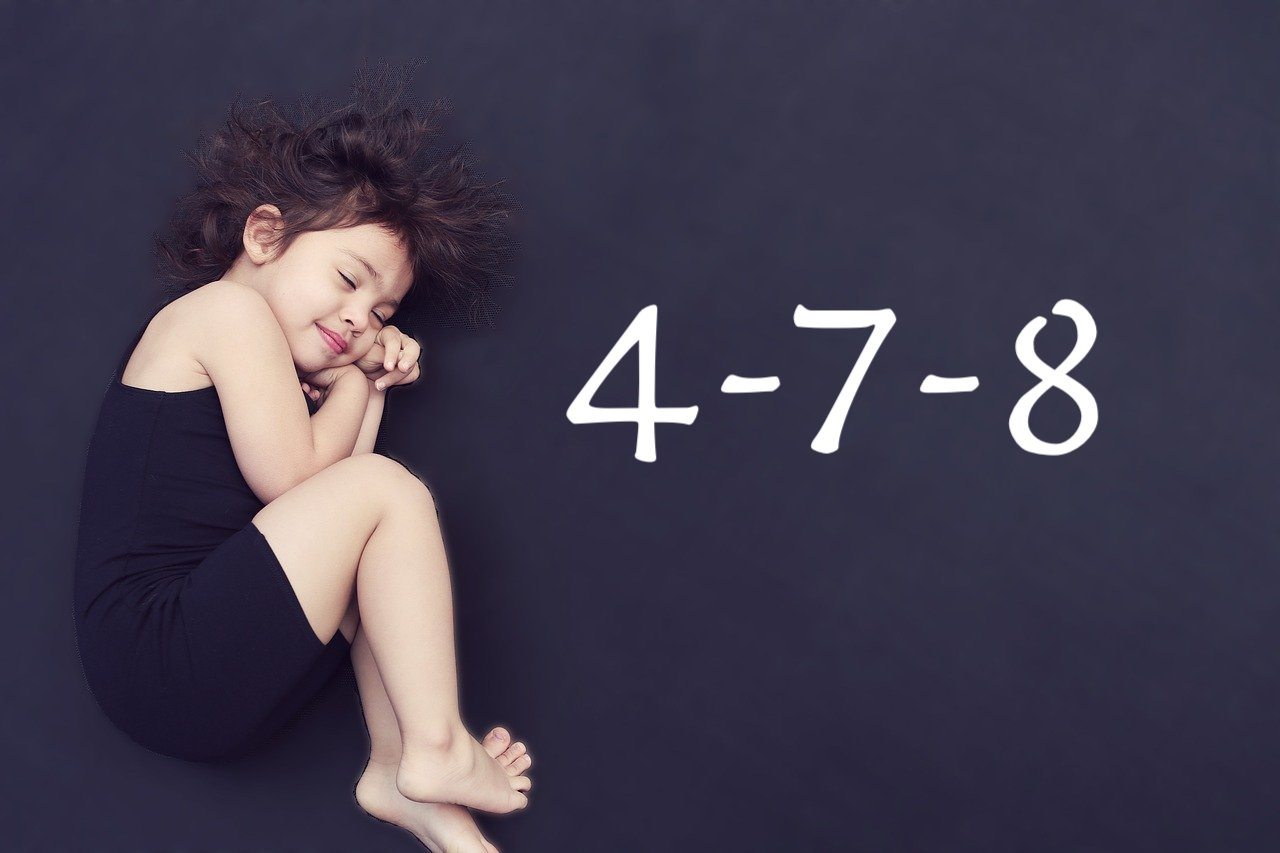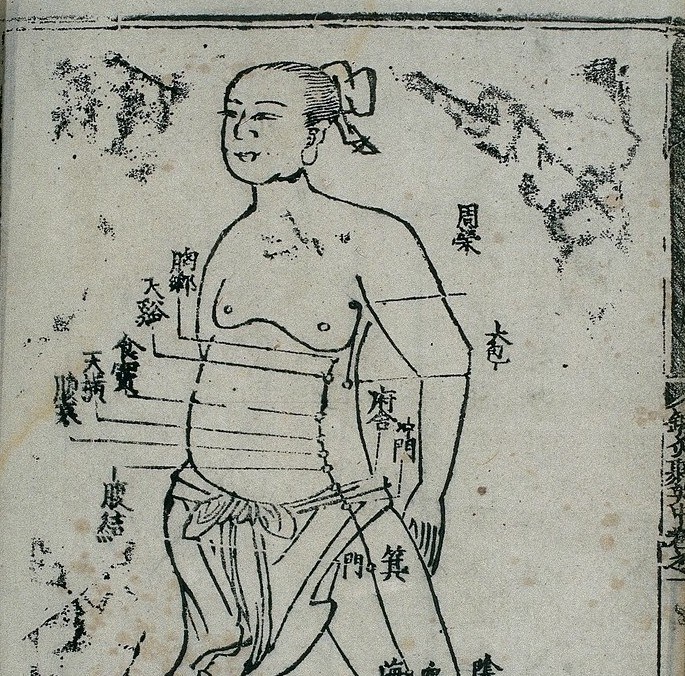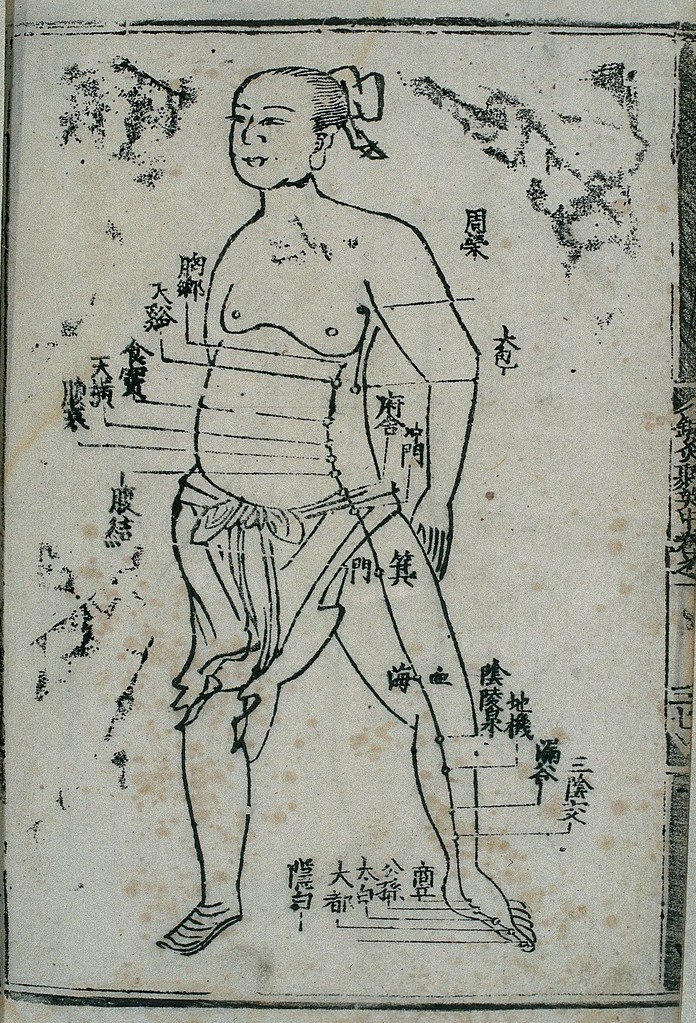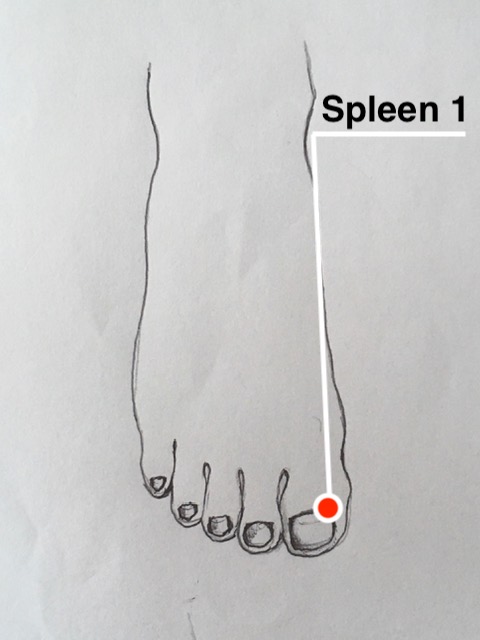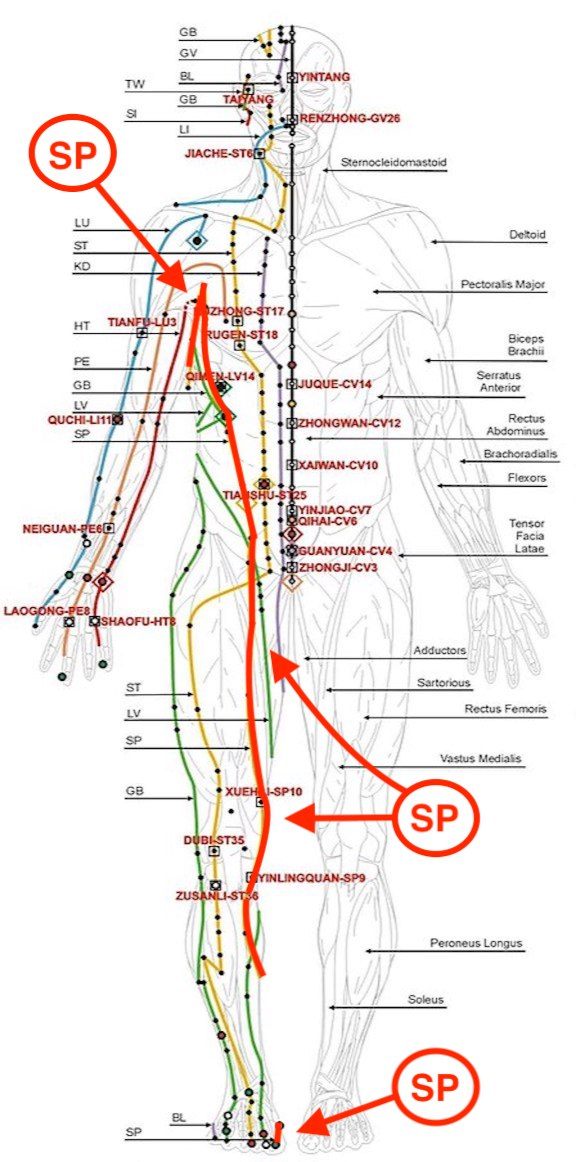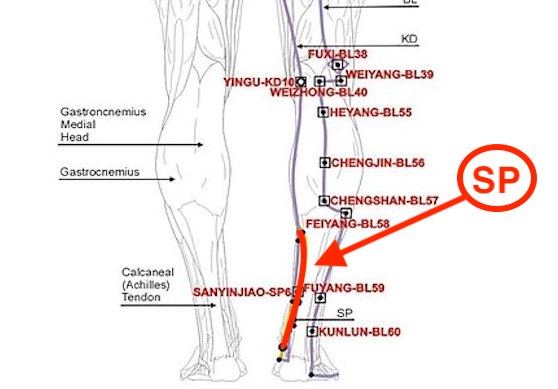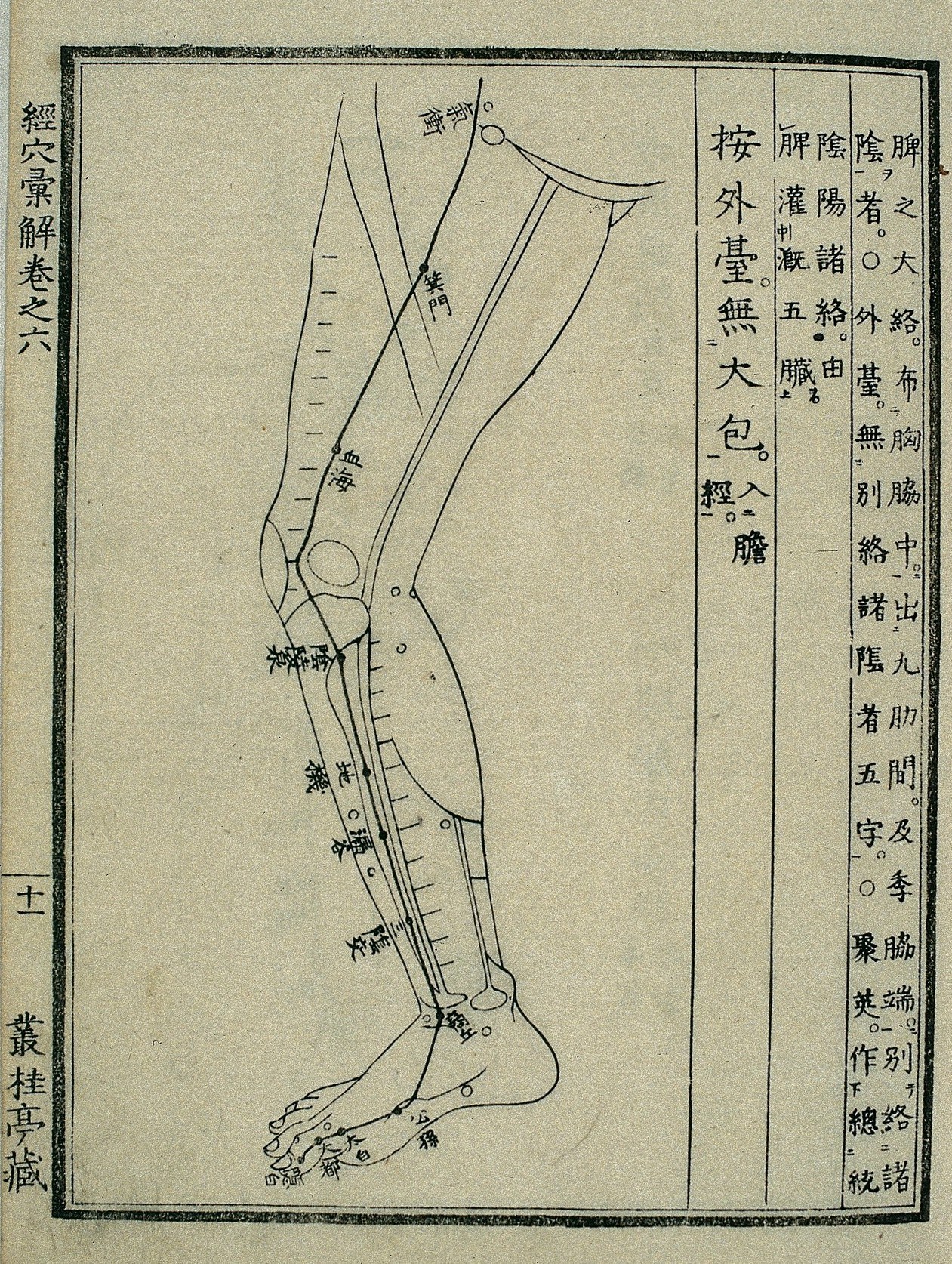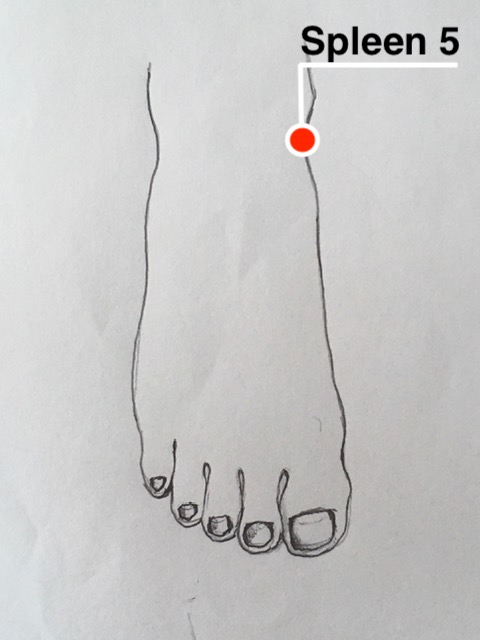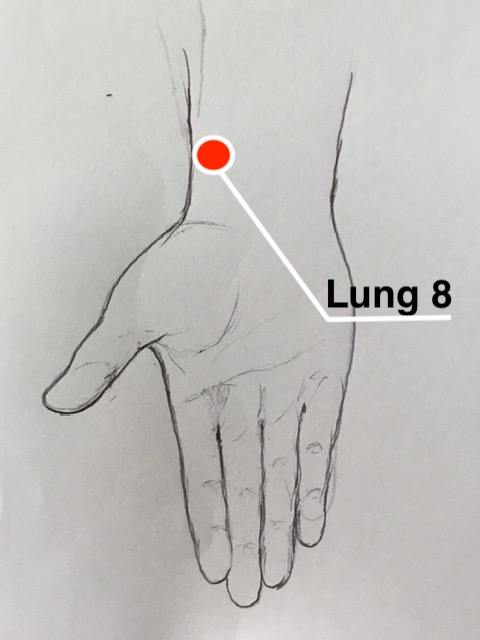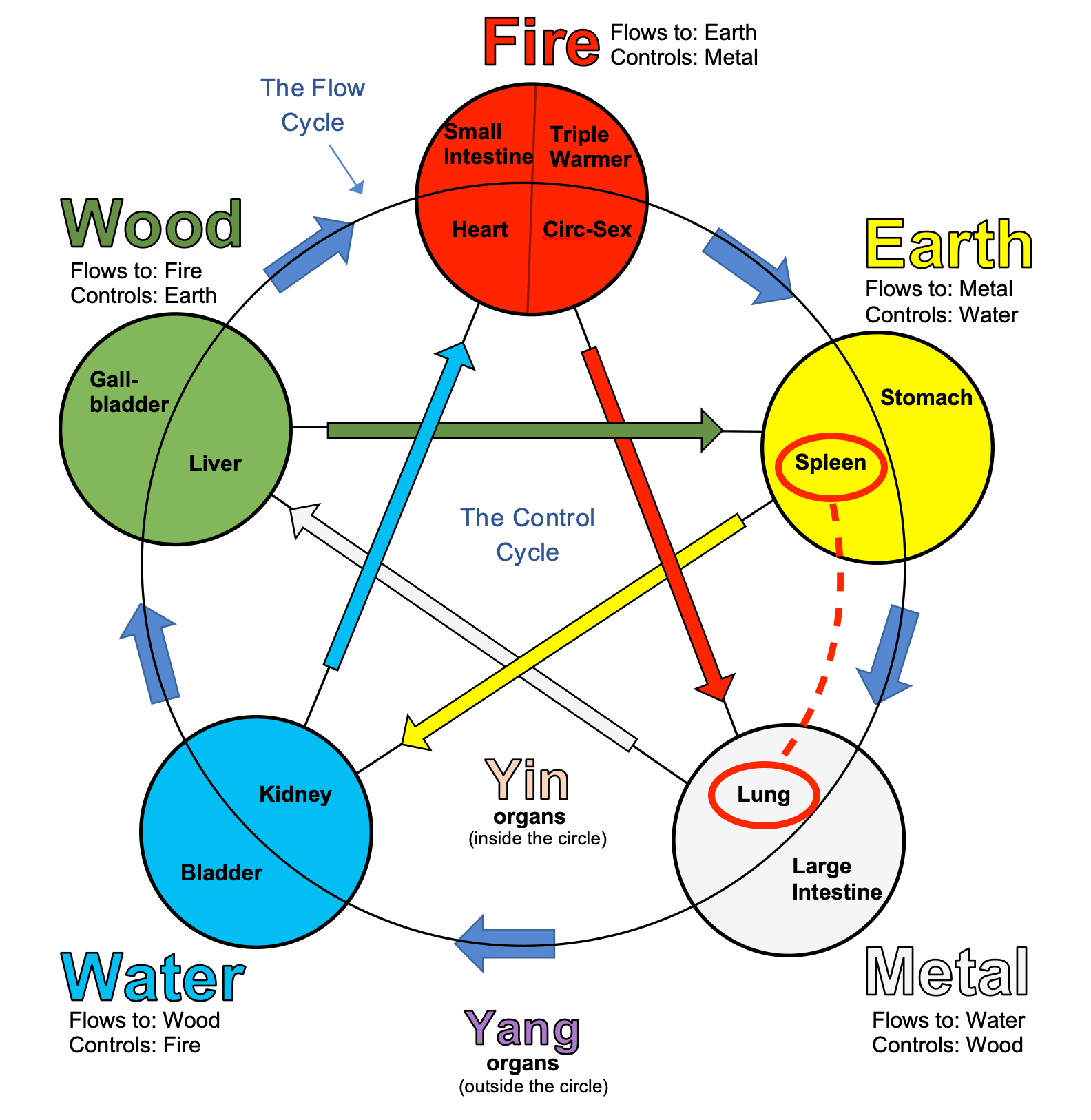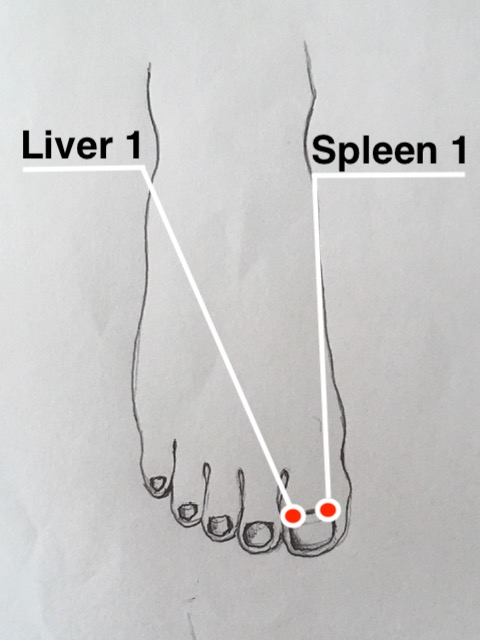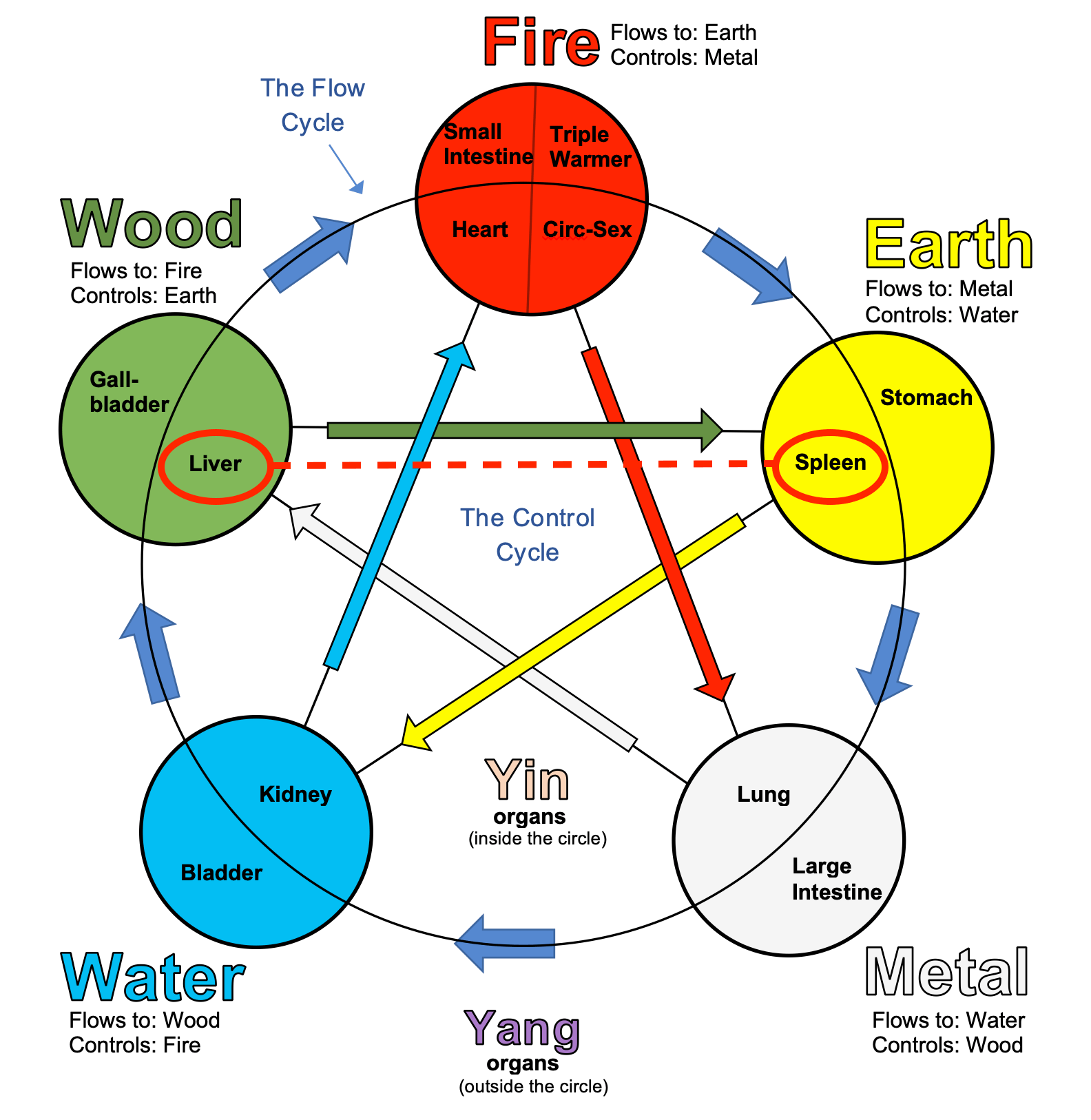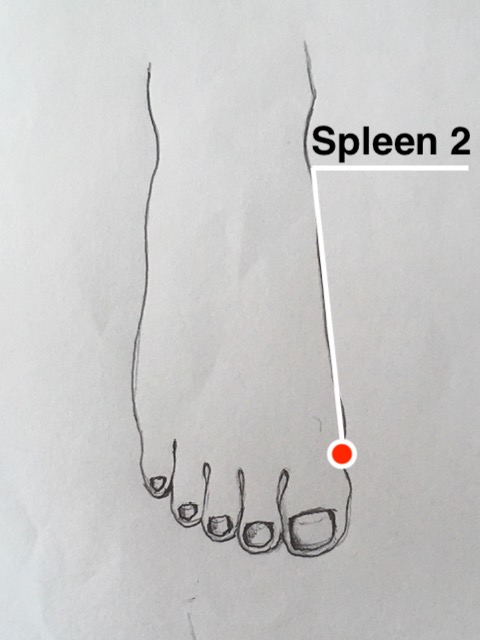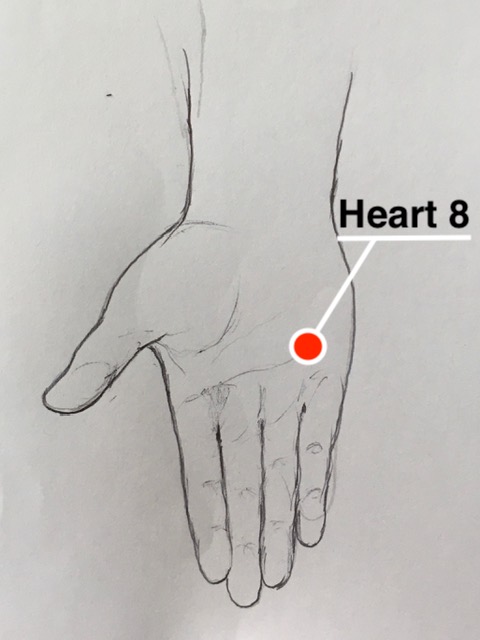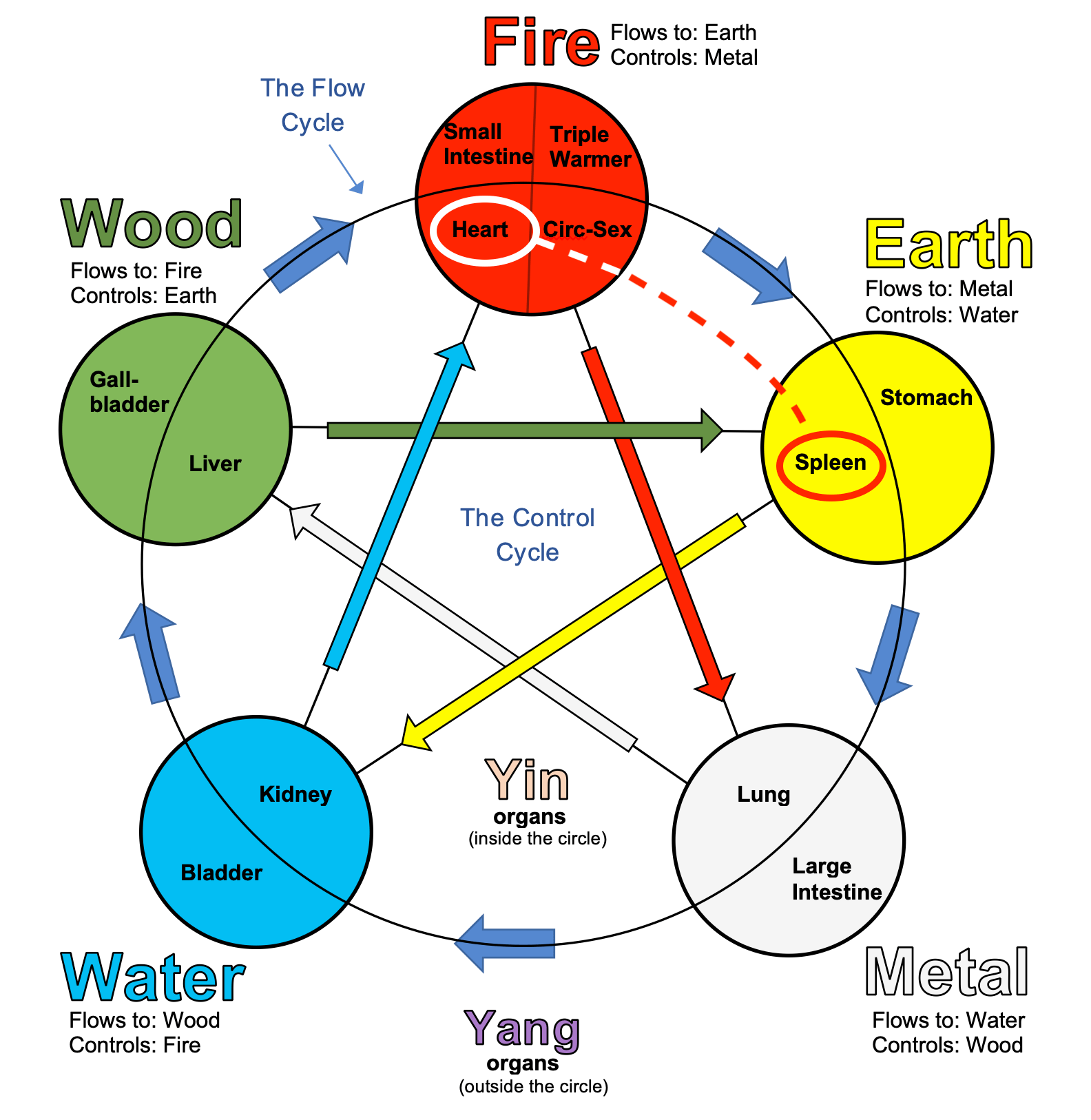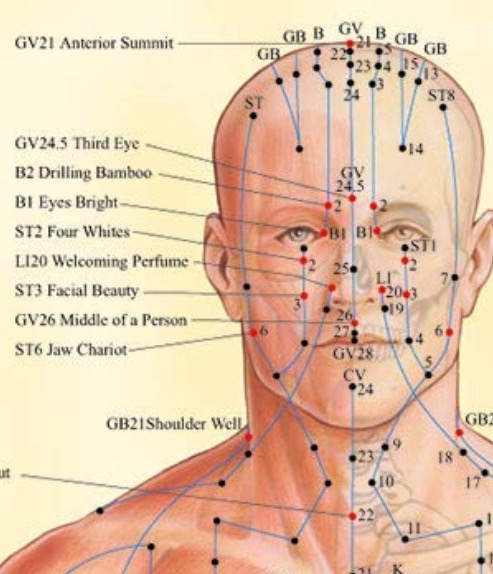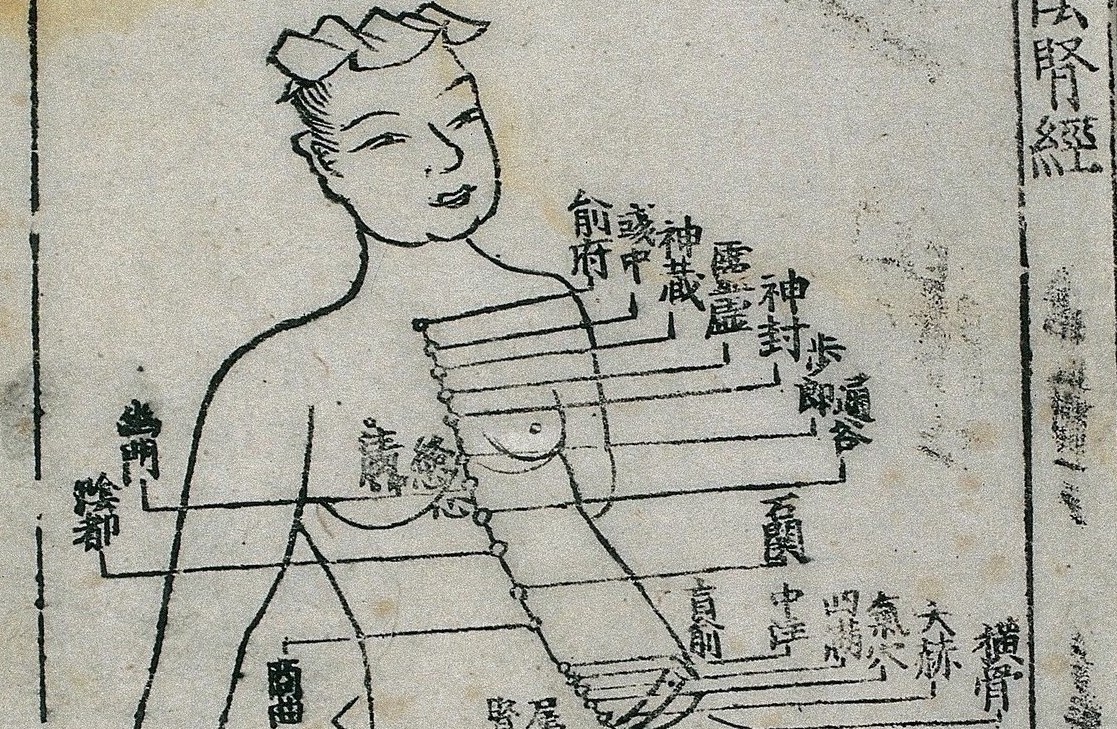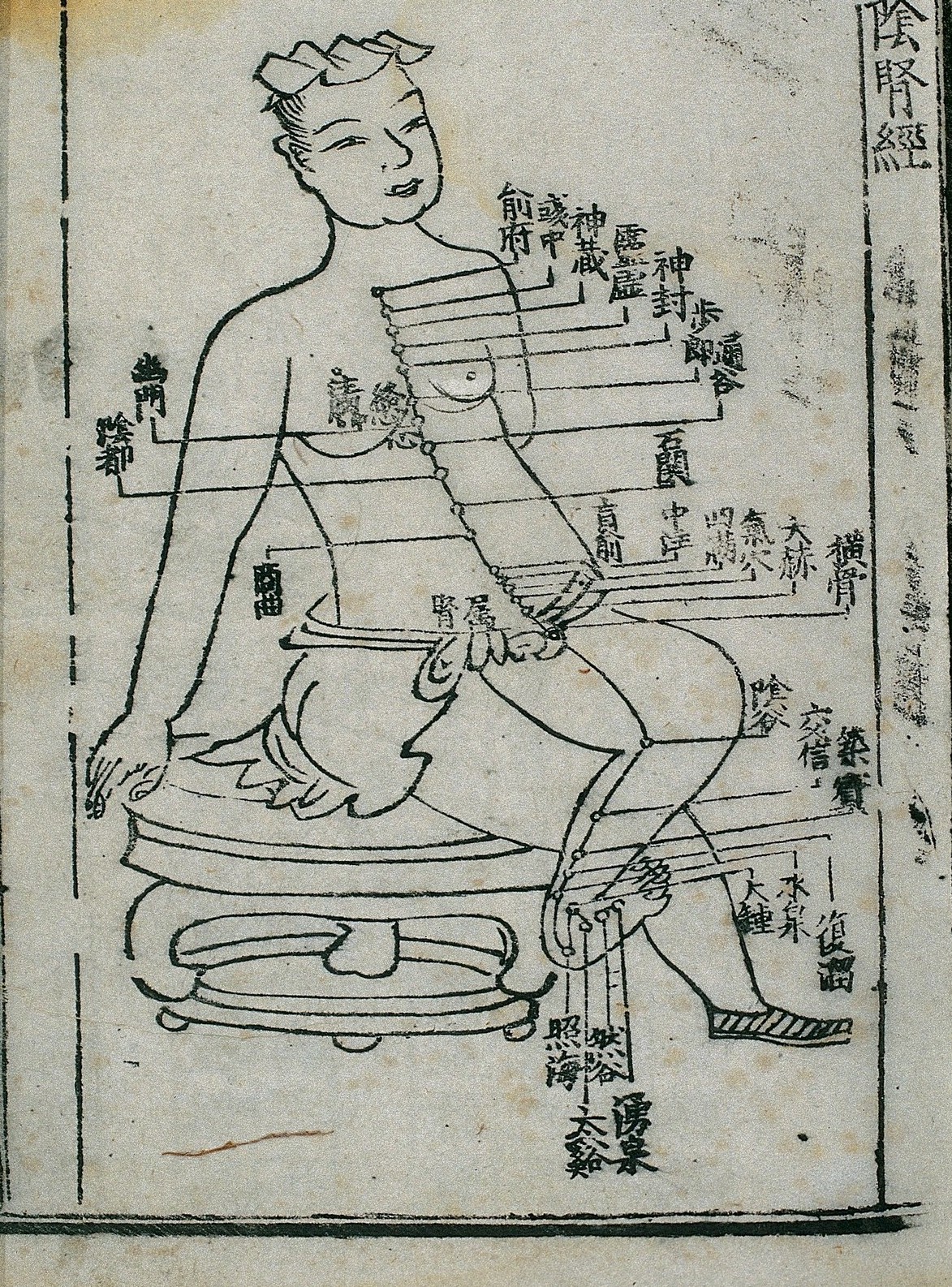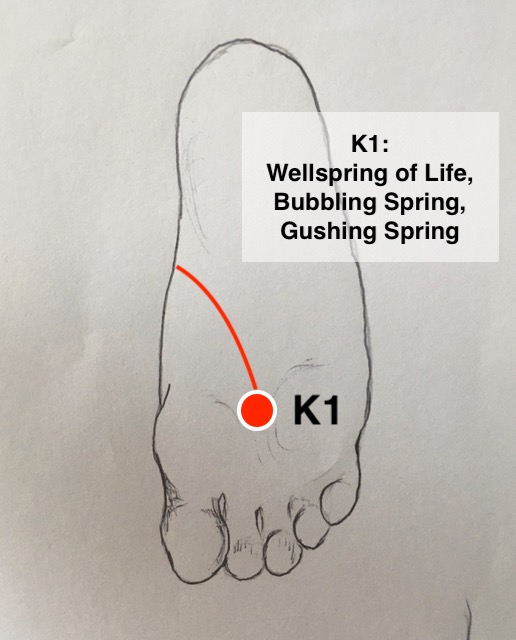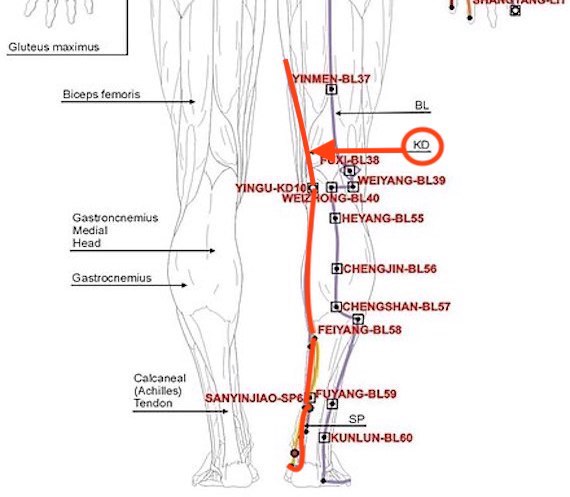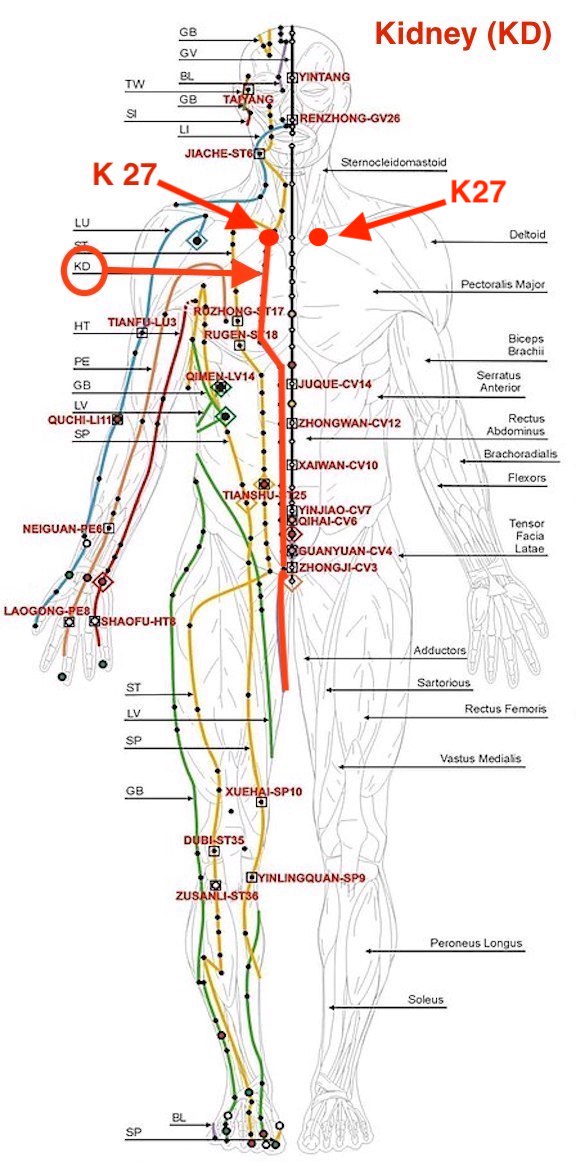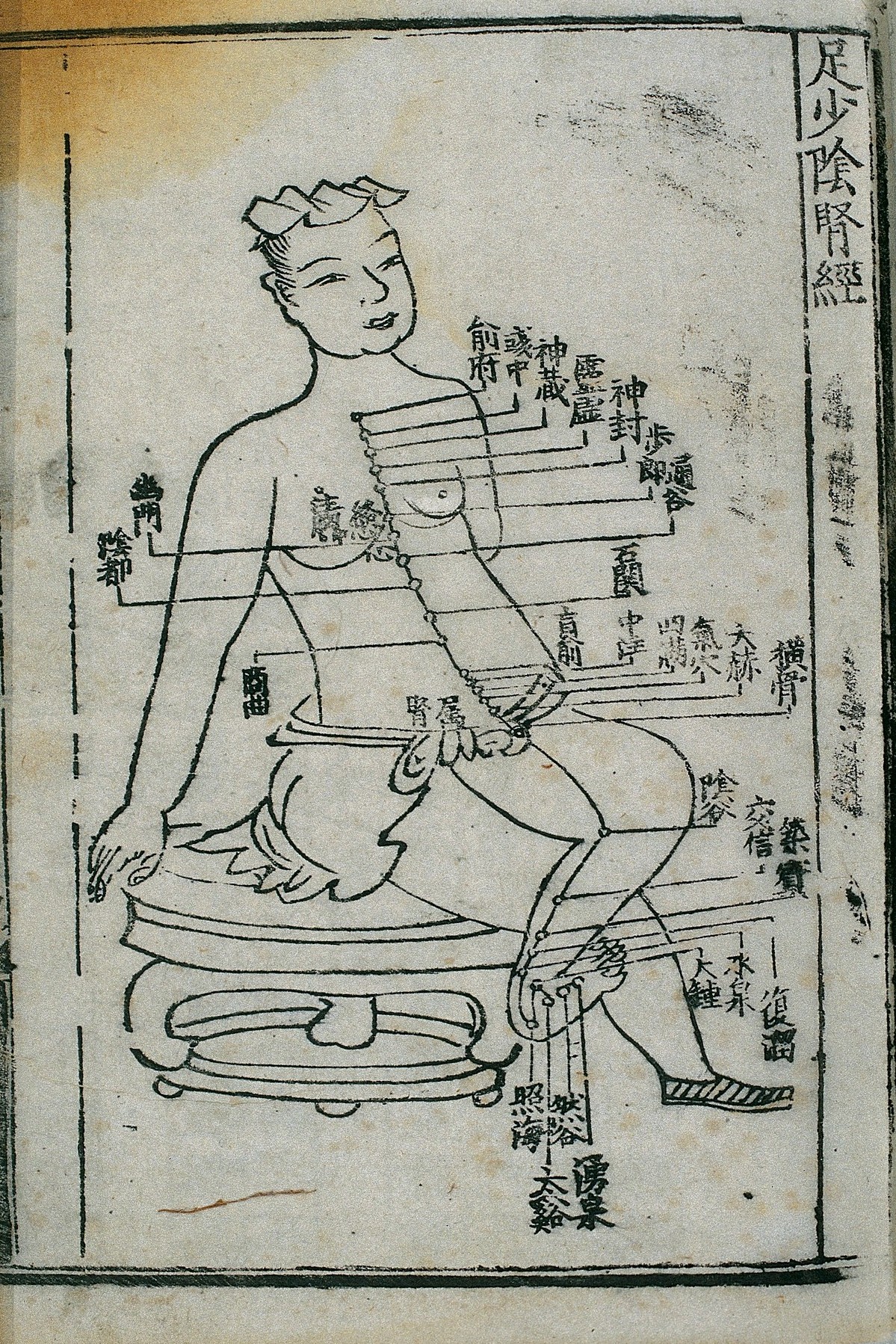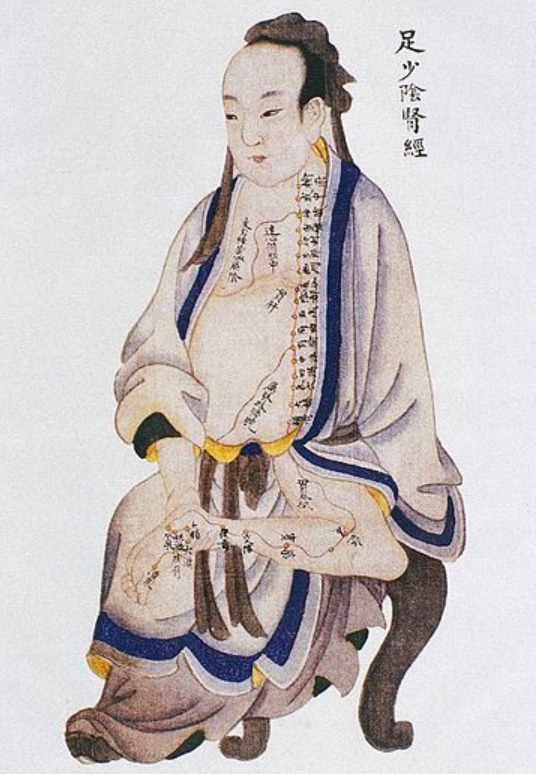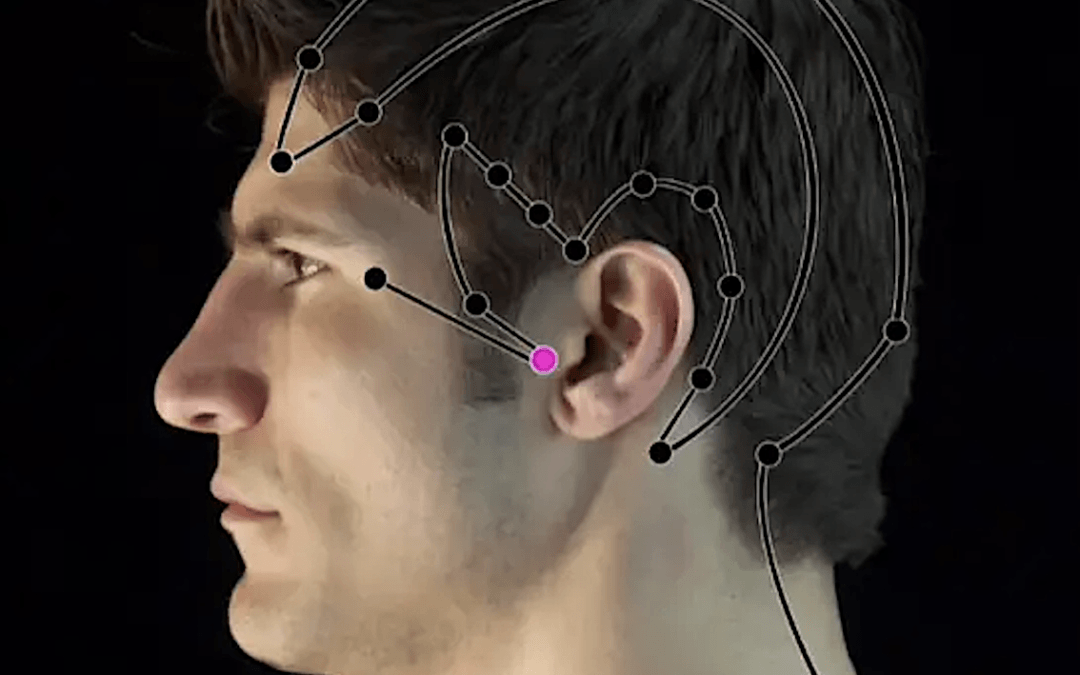
POINTS Review: Acupuncture Points and Charts
If you have been searching for high-quality software and app with the topic of acupuncture points and charts, you may find this review useful. POINTS Acupuncture Reference software is a comprehensive, user-friendly, and very helpful tool for:
- Anyone in need of getting rid of pain
- Anyone who’d like to learn about self-healing and improving their health
- Students and professional practitioners of acupuncture or acupressure
- Anyone with an interest in ancient healing techniques
Affiliate Disclosure: This page contains affiliate links. This means that if you make a purchase through my links, I will earn a small commission at no extra cost to you. The full disclosure can be accessed here. Thank you for your support!
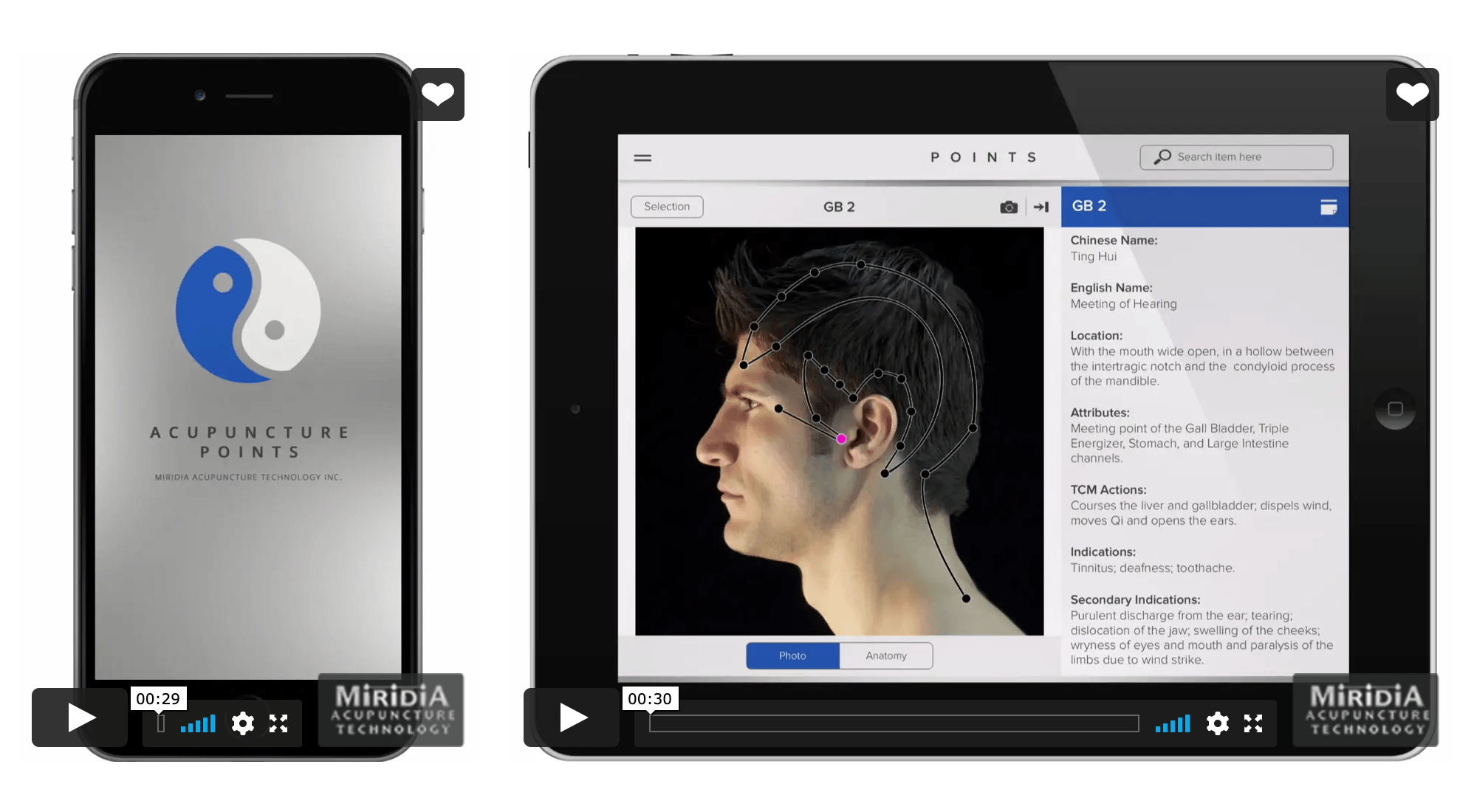
Product: POINTS – Interactive Acupuncture Software
Available from: MIRIDIA Acupuncture Technology
Main Benefits: Pain Relief/Relaxation/Clearing Out Toxins
Price: £99/£79/£39 (limited time special)
My Rating: 9 out of 10
Acupoints, Acupuncture and Acupressure
First of all, let’s have a quick look at acupoints, and the difference between acupuncture and acupressure.
Acupoints:
- Acupoints are small points on the surface of our body.
- They have less electromagnetic resistance then the rest of the skin, (which is measurable by specific electronic devices) so when they are stimulated, they and trigger healing or pain relief.
- They are detectable by infrared light.
- They are located on the body’s energy pathways, knows as meridians.
- I like comparing meridians to motorways, and acupoints to service stations.
Acupunture:
- Uses small needles to stimulate acupoints.
- It must be carried out by a professional – a licensed acupuncturist.
- An acupuncture session can be expensive and may be quite time consuming
- A qualified acupuncturist may not always be available when you most need it
Acupressure:
- Uses pressure or massage to stimulate acupoints
- You can use acupressure at home or anywhere else as a self-healing tool
- Unlike with acupuncture, you don’t have to be as precise in terms of locating the point correctly
What Acupressure and Acupuncture Have in Common:
All the acupoints are the same, whether you use acupuncture of acupressure.
They are both based on the knowledge of traditional Chinese medicine.
Both acupressure and acupuncture can be highly effective and facilitate deep healing or pain relief.
Both acupressure and acupuncture have their foundation in traditional Chinese medicine (TCM), where it has been practised for over two thousand years.
The principle behind the method lies in activating the body’s self-healing mechanisms to alleviate pain and treat illness.
Both acupuncture and acupressure stimulate the body’s acupoints (also known as pressure points). These points lie on fixed pathways or channels of energy, known as meridians. These energetic pathways are detectable by CT imaging methods, including MRI (magnetic resonance imaging), LCD thermal photography, infrared imaging, or ultrasound. They can be even visible to people with extrasensory perception abilities, such as the master energy medicine practitioner Donna Eden, who can see energy.
What makes acupuncture and acupressure work is the fact that each meridian pathway is energetically connected to a specific organ. (That’s why the points are named after the organ, eg LI = Large Intestine). Each meridian sends its energy and thus nourishes, a specific organ. Working with individual points that lie on the meridians (by applying pressure to them or needling them) can trigger multiple healing processes. It’s like switching a single light switch that will cause the whole room to fill with light. You can become your own body’s ‘electrician’!
POINTS – Interactive Acupuncture Software
As a student of energy medicine and holistic healing techniques, I am very interested in the systems that acupuncture and acupressure and based on. I like finding acupoints and using them to alleviate pain or detox the body. My favourite acupoints chart is the folding laminated accupressure chart by award-winning medical illustrator Vincent Perez.
But I also wanted to know what points to use for specific problems, and learn more about each of the points. So when I came across the website of Miridia Acupuncture Technology and found out about the POINTS software, I knew it was the very tool I’d been looking for for months.
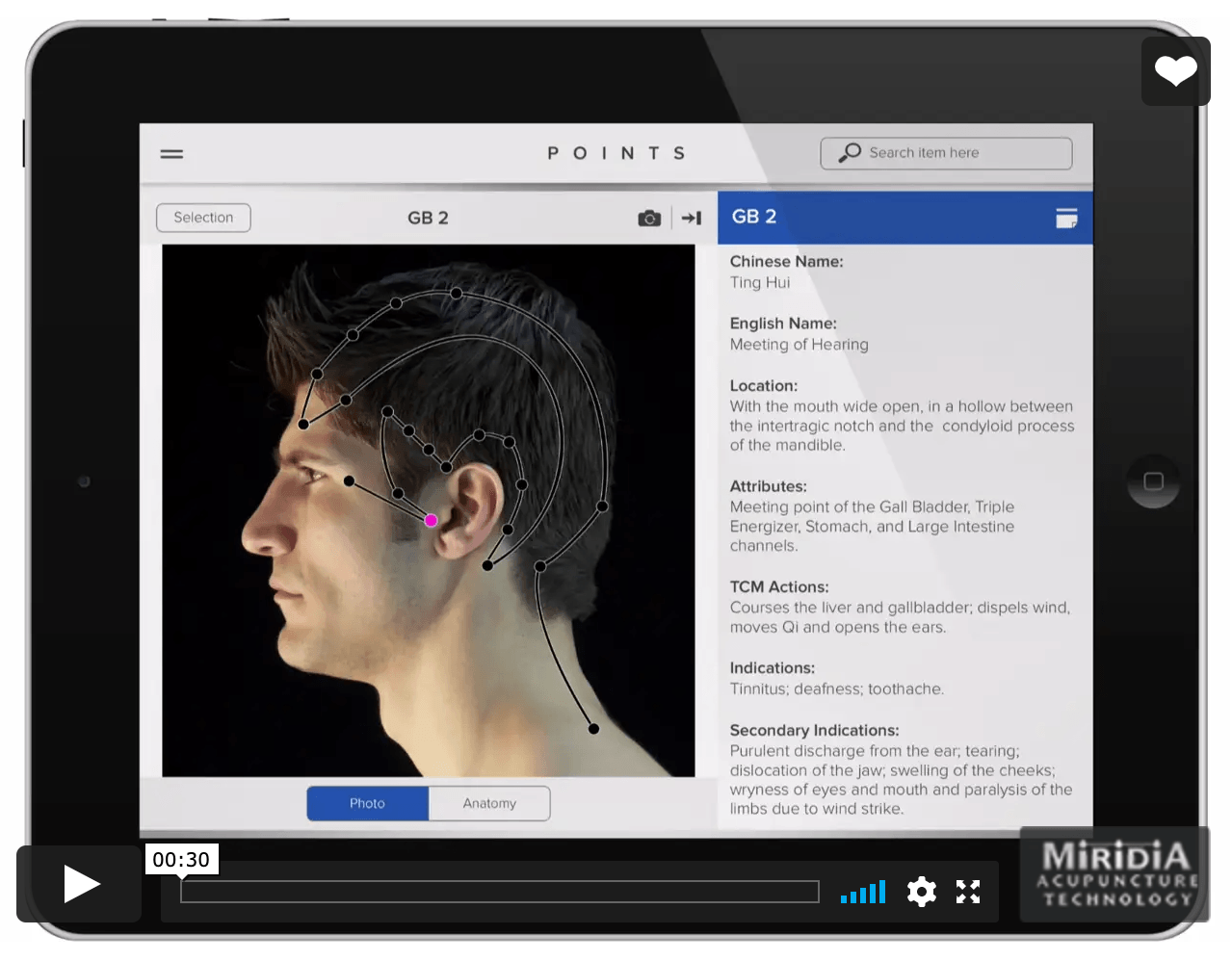
A Brief Overview of POINTS
POINTS It is a reference tool that you can download to your computer or laptop, or you can get an app for your iOS devices.
Through POINTS, you will learn about practical use of acupoints.
The software (or app) contains complete information about all 361 acupoints and the treatment protocols related to each of the points.
You will also learn about the acupoints energy pathways, also known as channels or meridians.
POINTS will enable you to:
- Understand the function of each acupoint
- Search for a health problem in the list of symptoms
- Locate the acupoints related to the symptom and treat it using acupressure (or acupuncture if you are a qualified practitioner; POINTS also contain needling instructions for every point)
I’ve got the iOS version of the software and I can easily say that POINS is one of the best interactive reference tools currently available.
How Can You Treat Yourself with Acupressure
Exploring POINTS
Now, let’s have a closer look at the software so you can start using it straight away. The POINTS software consists of three sections:
- Points
- Protocols
- Charts
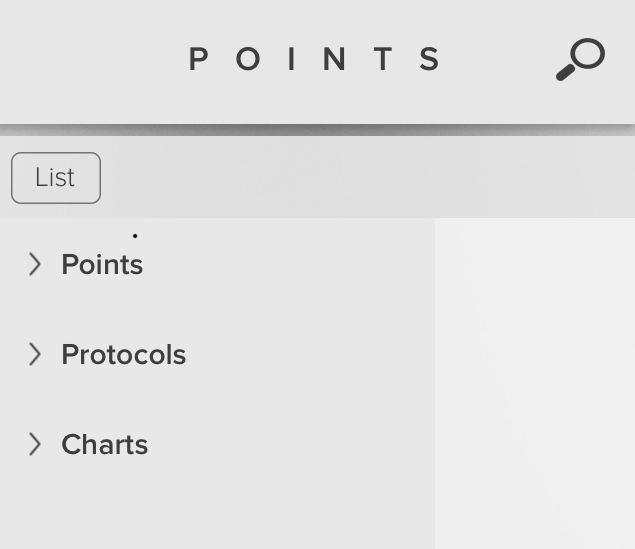
When you click on ‘Points’, a list of all the meridians and their related acupoints will appear (in their abbreviated form).
There are 14 of the main meridian names and 42 extra points.
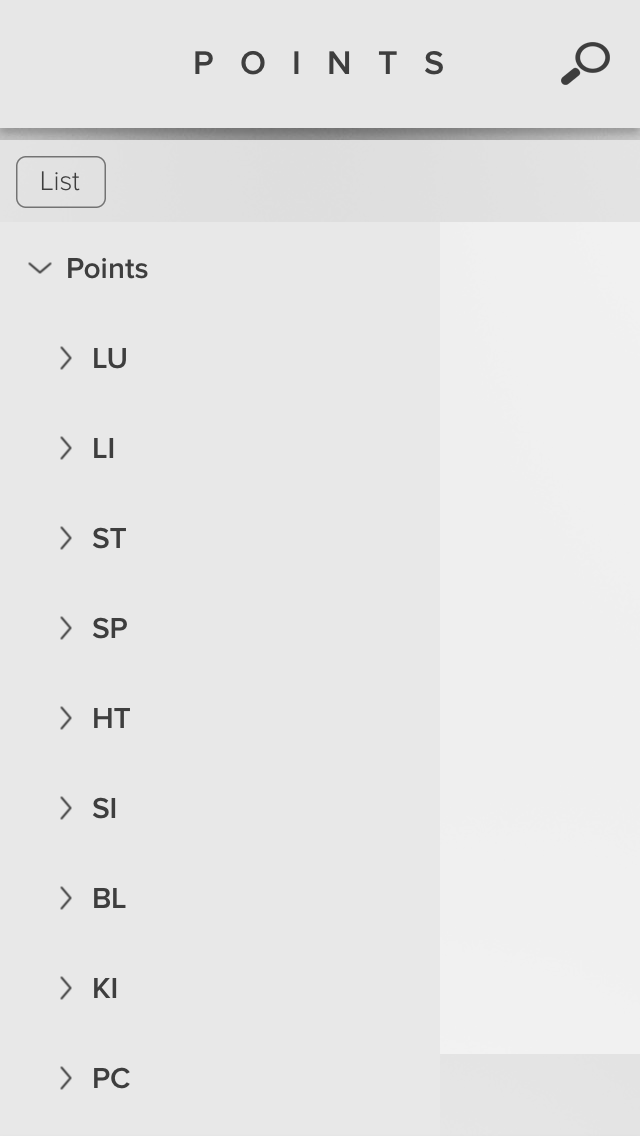
The 14 Meridians and Points Names
If you are not familiar with the abbreviations of the main meridians and acupoints, here is a quick reference list:
LU – Lung
LI – Large Intestine
ST – Stomach
SP – Spleen
HT – Heart
SI – Small Intestine
BL – Bladder
KI – Kidney
PC – Pericardium (Heart Protector)
TE – Triple Energiser (Triple Warmer)
GB – Gallbladder
LR – Liver
CV – Conception Vessel (Central Meridian)
GV – Governing Meridian
Selecting a Point
You can then click on the point of your choice. As an example, I clicked on ‘LI’, meaning the pathway (channel, or meridian) of The Large Intestine. You’ll see the entire meridian pathway as well as its acupoints.
Clicking on the blue tab ‘Information’ will reveal the main functions of the meridian. For example, The Large Intestine meridian regulates elimination of solid waste, and together with the Lung Meridian controls lung function and can even influence the health of your skin.
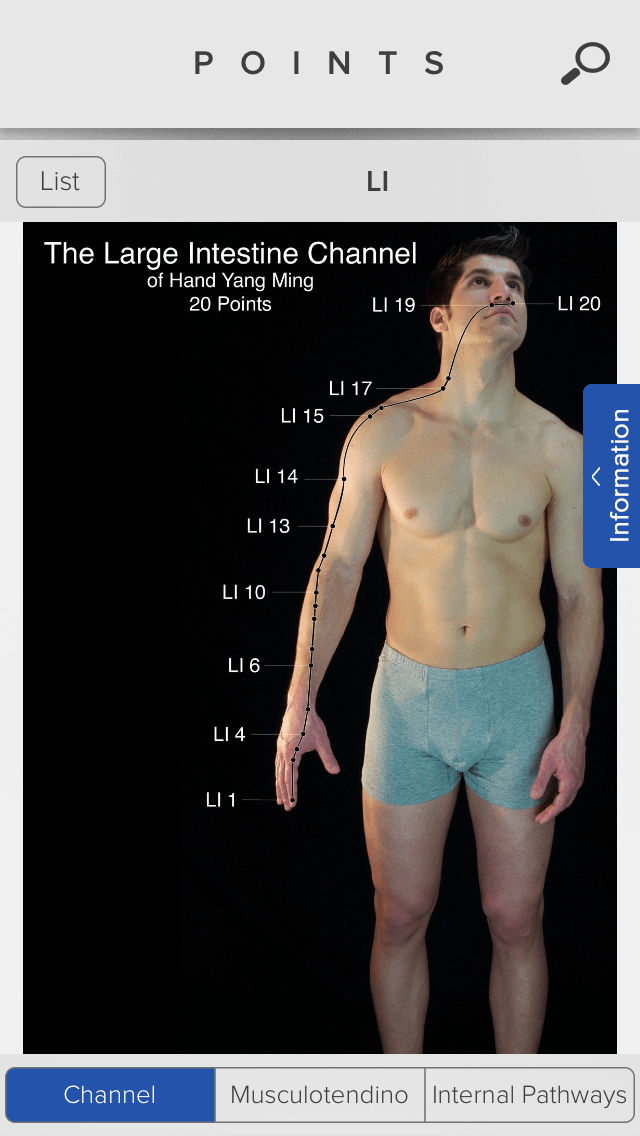
This image is the property of Miridia Acupuncture Technology.
Under the picture, you will see three display options: Channel, Muscolotendino, and Internal Pathways.
Channel
This shows the meridian channel with all its acupoints, as in the photo above. When I saw this for the first time, the first thought that came to my head was “Hold on, I don’t think large intestine is in my arm…!”
No, it really isn’t. What we see on the photo is only a part of the meridian, the part that runs on the surface. The energetic pathway then continues to flow deeper in the body through internal pathways, and through these internal pathways it connects to the organ it has been named after. So now you no longer have to get confused when you see the large intestine, kidney, or lung run up the model’s arm!
Muscolotendino
This option displays the muscular and tendinous tissues related to the meridian.
Internal Pathways
This shows the internal pathways of the meridian. Every meridian has external and internal pathways. What we see in the first photo (under ‘Channel’) is the external pathway – the pathway that runs near the surface of your skin and that has the acupoints on it.
But the meridian doesn’t end there – is continues to flow deep inside the body through its internal pathways that you can see in this picture.
Through pressing or needling the acupoints of the external pathway you can influence the internal pathways of the meridian – the ones that feed the related organ – and improve the health of the organ or system.
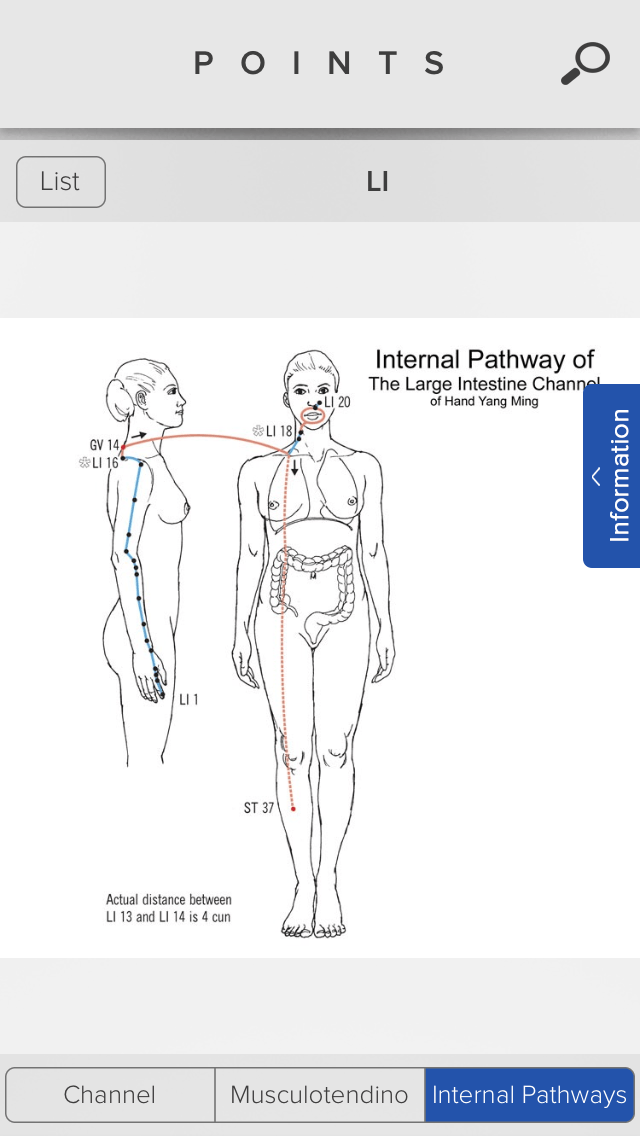
This image is the property of Miridia Acupuncture Technology.
Protocols for Over 360 Issues or Conditions
There are over 360 listed issues or conditions listed in the app.
Even if you are not an acupuncturist, you can still work with these points by pressing and massaging them.
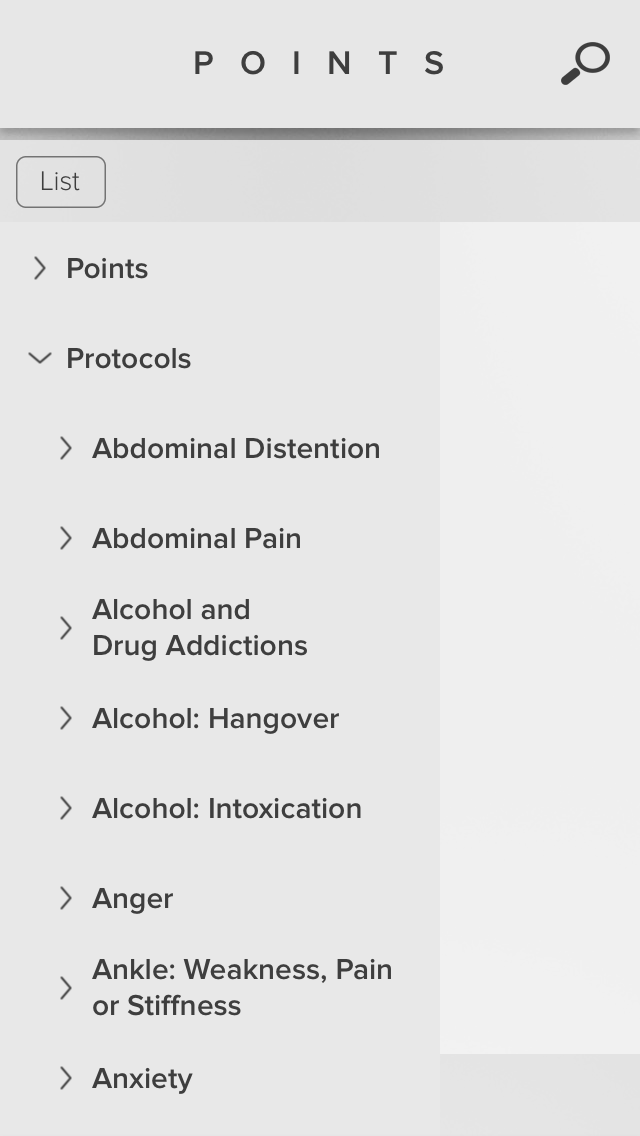
Here are some examples of the issues listed in the app:
- Abdominal Pain
- Alcohol: Hangover
- Alcohol: Intoxication
- Anger
- Anxiety
- Asthma
- Autism
- Common Cold Prevention
- Common Cold Treatment
- Conjunctivitis
- Cough
- Depression
- Dreams: Nightmares
- Epilepsy – During and After Seizure
- Fatigue/Exhaustion
- Fear
- Fever
- Flatulence
- Food Poisoning
- Grief
- Hay Fever
- Headache
- Hernia
- Hiccup
- Immune Function (Low)
- Impotence
- Indigestion
- Inflammation (infection)
- Insomnia
- Irritability
- Knee: Weakness, Pain or Stiffness
- Labour: Induction
- Labour: Prolonged
- Laryngitis
- Libido: Lack of sexual desire
- Libido: Lack of sexual desire
- Lover: Hepatitis
- Low Back Sprain
- Low Back: Weakness, Pain or Stiffness
- Manic-Depressive Disorder
- Menopause: Hormonal Imbalance
- Menopause: Hot Flushes
- Motion Sickness
- Mouth Ulcers
- Nervousness
- Nightmares
- Neuralgia
- Orgasm: Inhibited
- Pain: Fixed
- Pain: Tendons
- Palpitations
- PMS: Irritability
- PMS: Lower Back Pain
- PMS: Mental Depression
- Pneumonia
- Poor Memory: Forgetfulness
- Post Pregnancy (various issues)
- Sea Sickness
- Shock
- Shoulder: Weakness, Pain or Stiffness
- Sinusitis
- Sore Throat
- Stomachache
- Tinnitus
- Toothache
- Urinary Disorders
- Vision (variosu issues)
- Voice: Loss of
- Weakness
(This is only a selected list from over 360 conditions covered in POINTS)
Example of using POINTS for specific issues
Let’s say you have a headache.
Under ‘List’, press ‘Protocols’ .
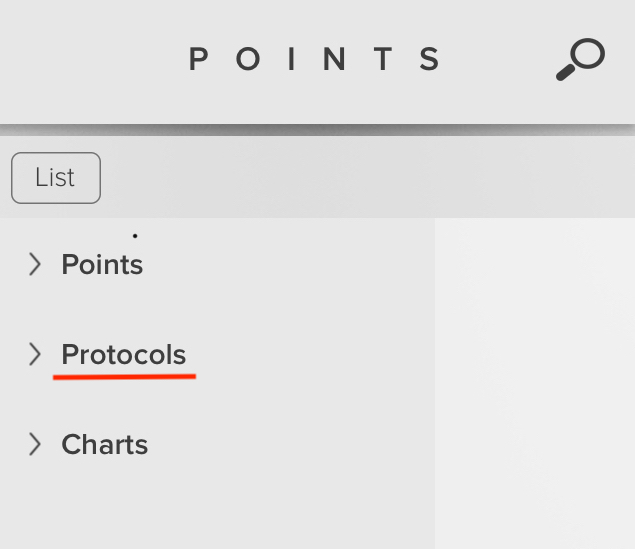
Look for the ‘headache’ in the list of symptoms, arranged in alphabetical order.
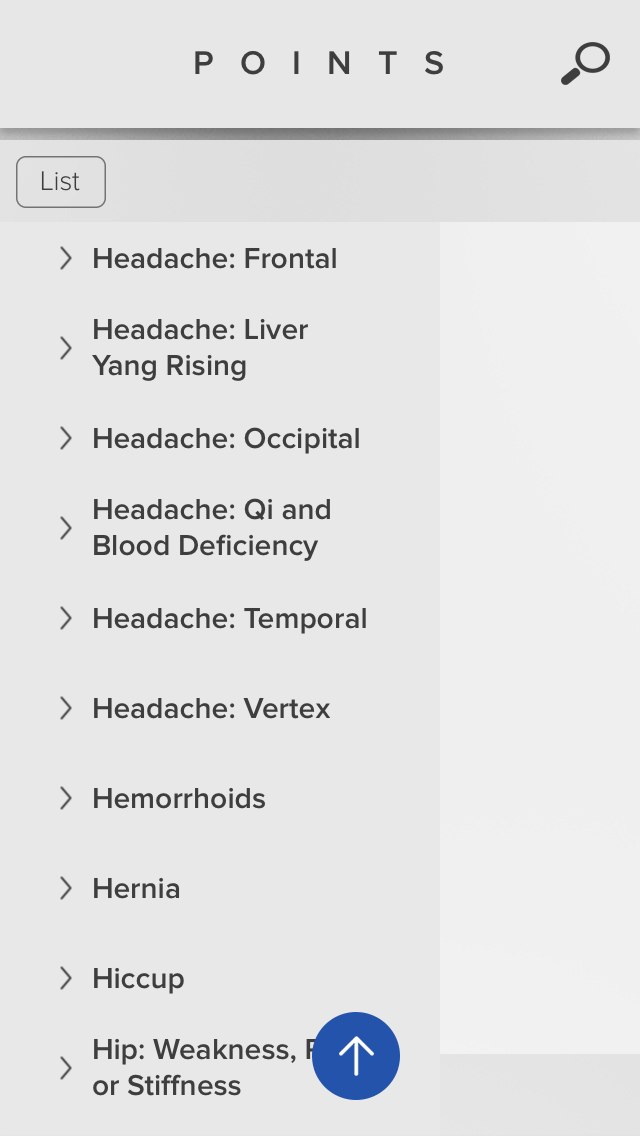
Clicking on the issue will reveal a list of suitable acupoints that you can work with to treat the condition. For instance, if you click on ‘Headache: Frontal’, you will get an option of five acupoints that you can work with.
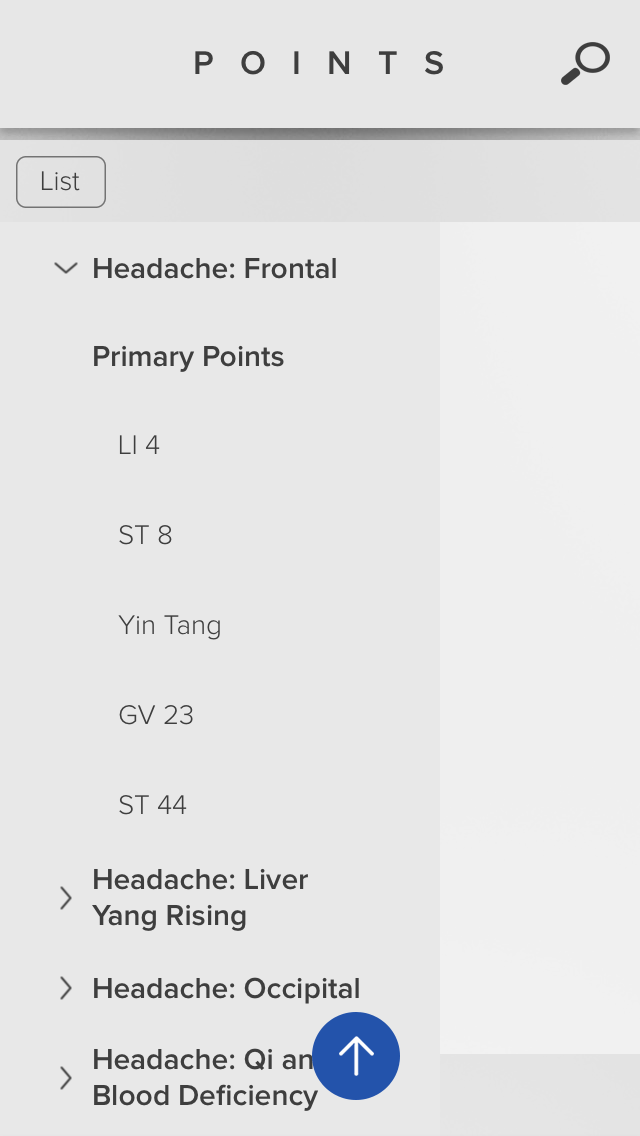
Let’s say you select the first point offered – LI 4 (Large Intestine 4).
Clicking on ‘LI 4’ will reveal the exact location of the point through a photo as well as a detailed anatomy picture. The high-quality visuals and precision are one of my favourite aspects of the POINTS app.
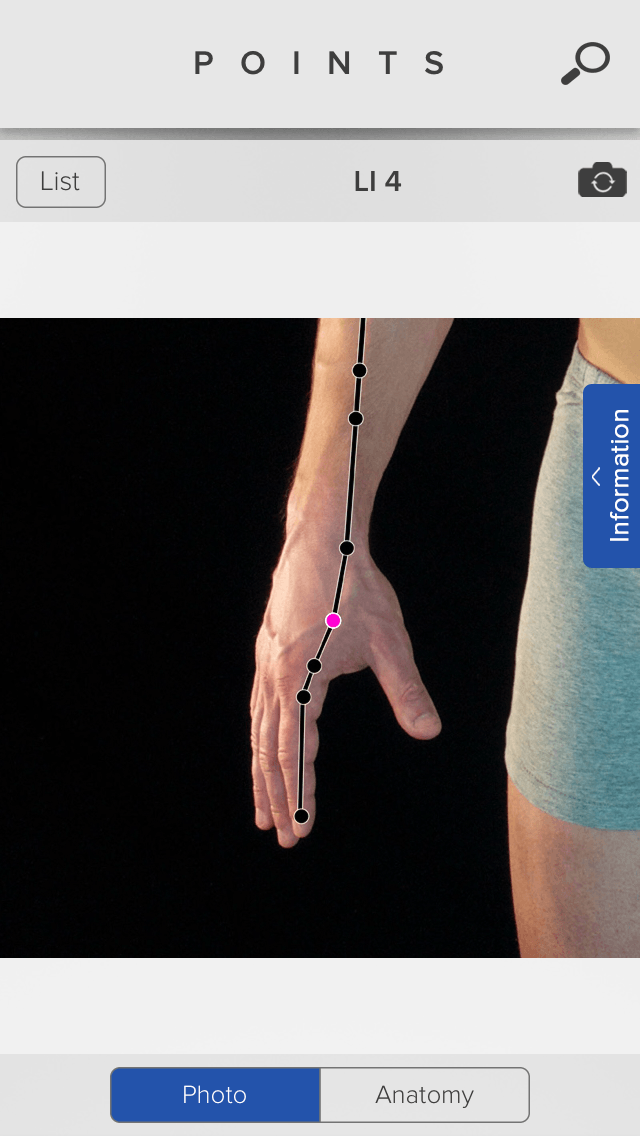
This image is the property of Miridia Acupuncture Technology.
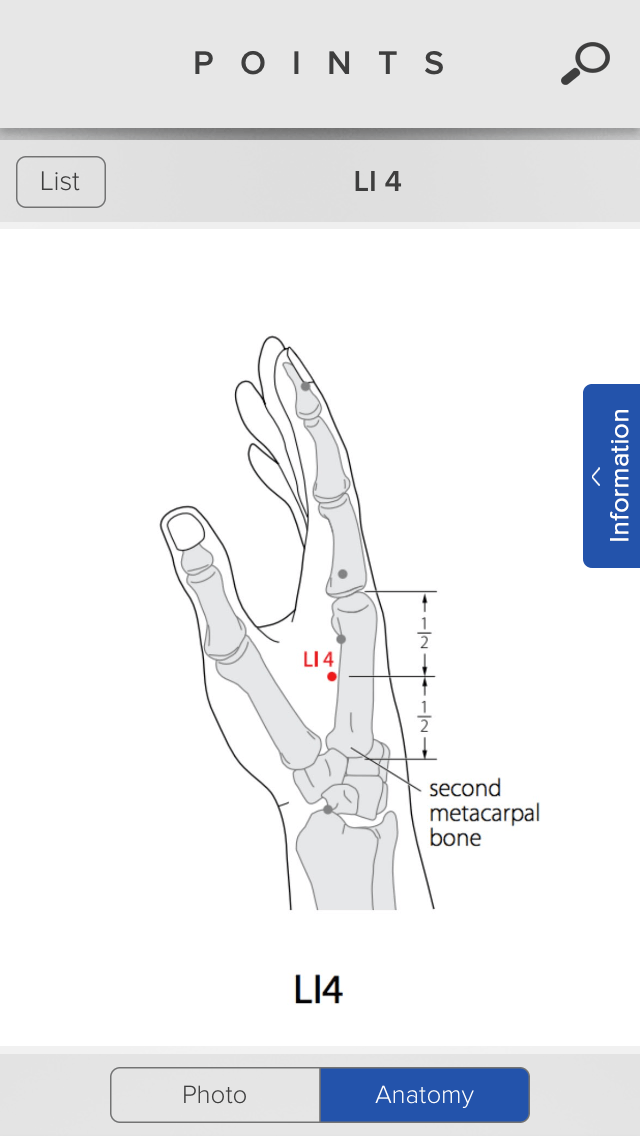
This image is the property of Miridia Acupuncture Technology.
Clicking on the blue tab on the right hand side, ‘Information’, will reveal the Chinese and English name of the point, the location, attributes, functions, indications, and cautions. (For example: Large Intestine 4 should not be used during pregnancy, because it can induce labour.)
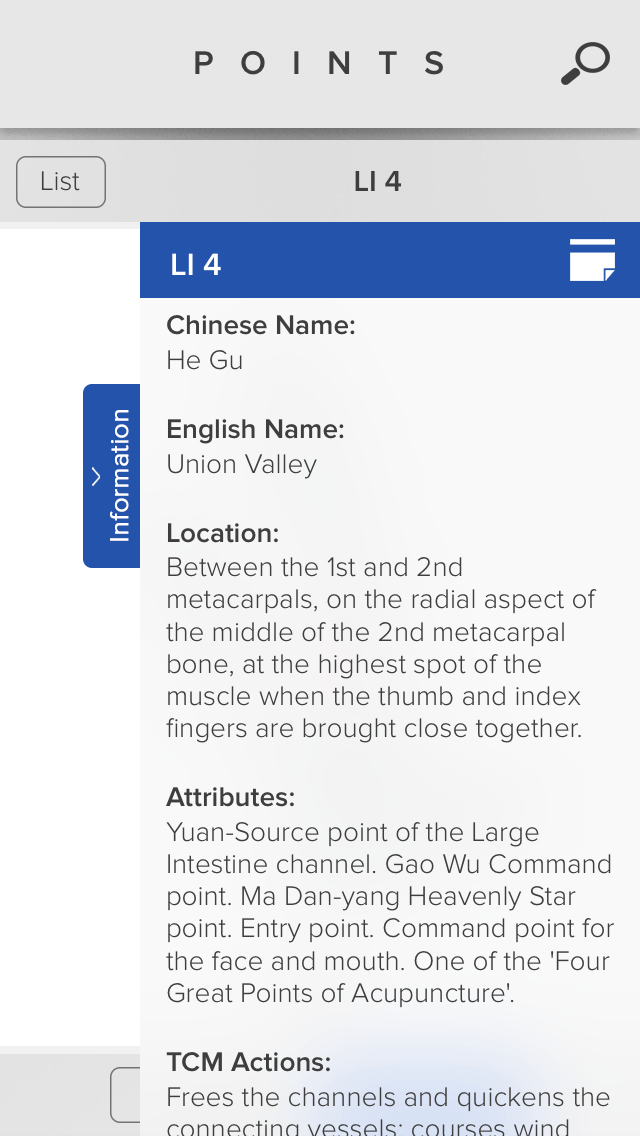
An example of information about a specific acupoint. (A selected part only.)
This image is the property of Miridia Acupuncture Technology.
Another way of searching for various conditions is to use the search tool at the top right corner of the screen.
When you type in a condition or a symptom (e.g. a headache) a list of relevant points for addressing the issue will appear.
And, of course, each and every point is backed by a photo, an anatomy drawing, and detailed information, just like in the example with ‘Large Intenstine 4’.
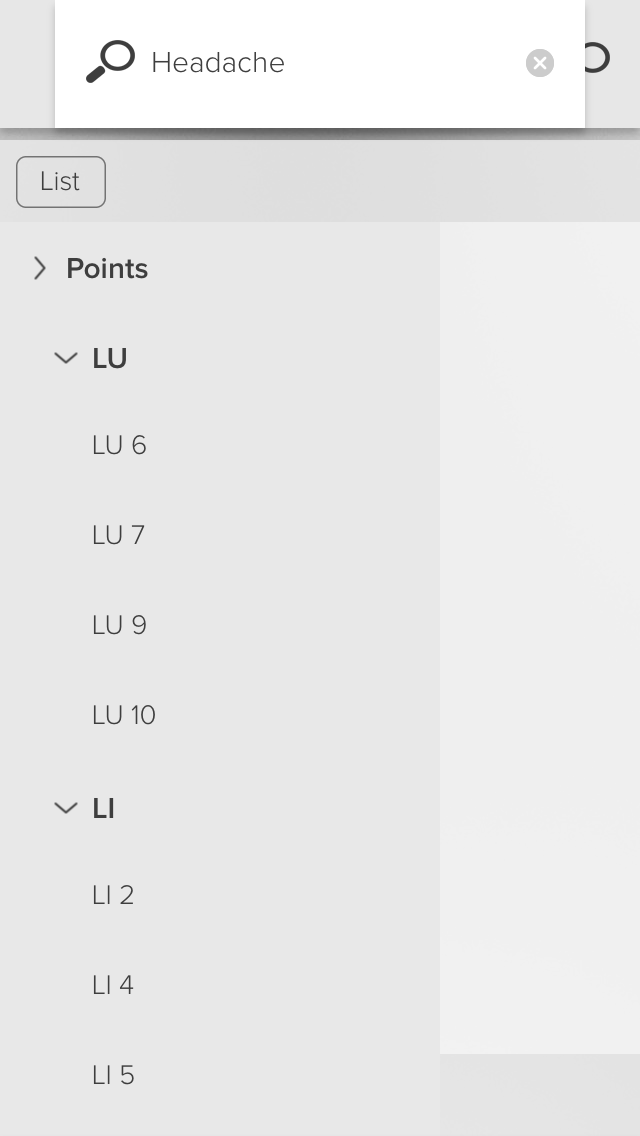
PROS:
- Easy to use with clear, comprehensive explanations of all the points and protocols
- A vast list of conditions and issues that can be treated immediately
- Beautifully designed interface, real-life model in the photos, and great detail in the drawings, making it easy to locate every point with precision
CONS:
- If you want to own both the desktop version and the app, you have to buy both of them
- Not all the charts in the part ‘Charts’ are for beginner-friendly – some of them lack detailed information and can thus come across as incomprehensible to beginners.
Customer Reviews
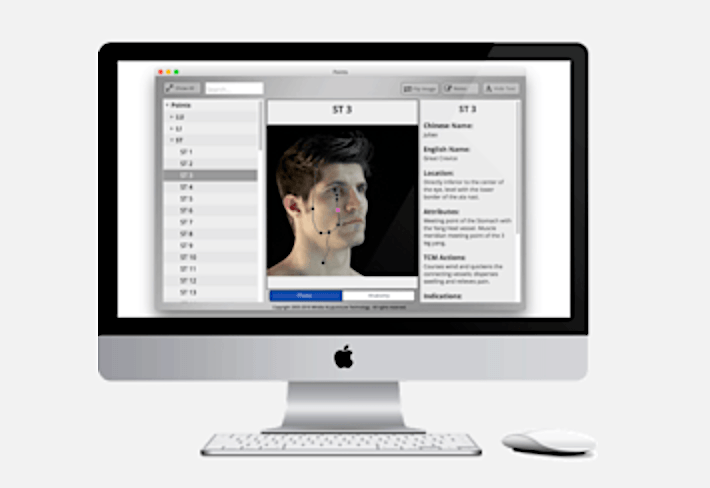
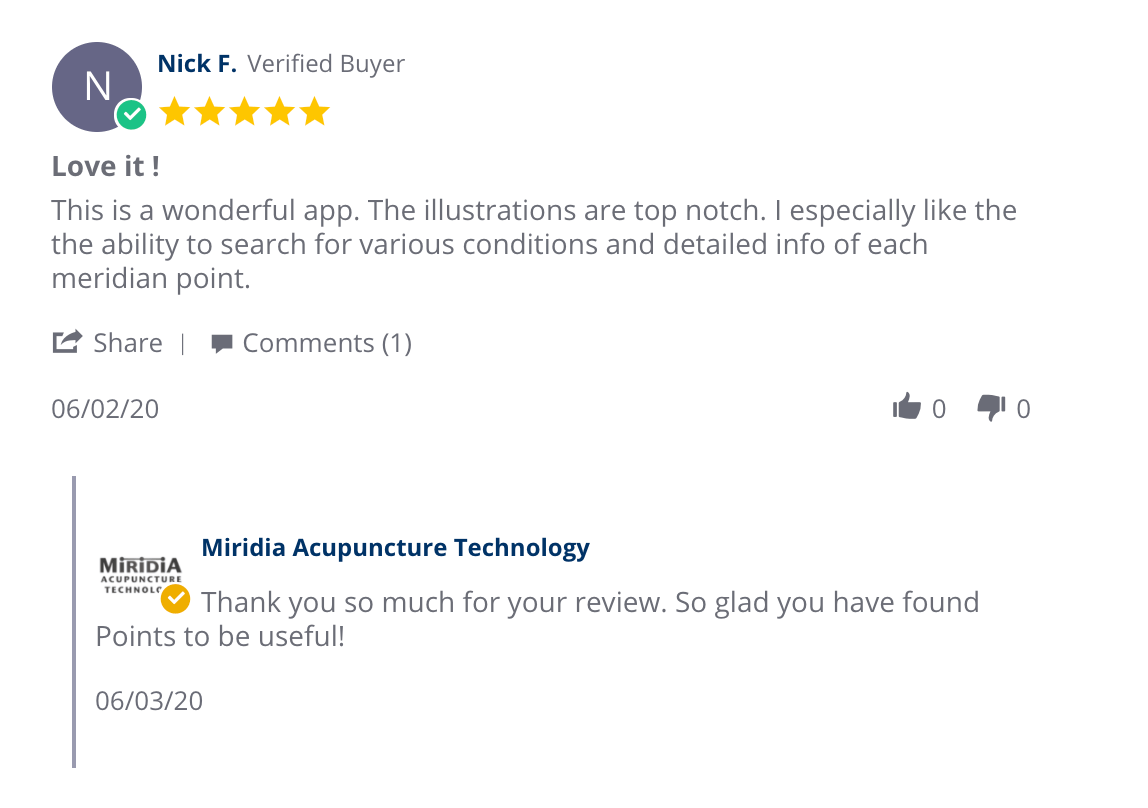
My opinion: Like this customer, I particularly like the search tool option as well as the extensive list of conditions under ‘Protocols’. The illustrations are great indeed.
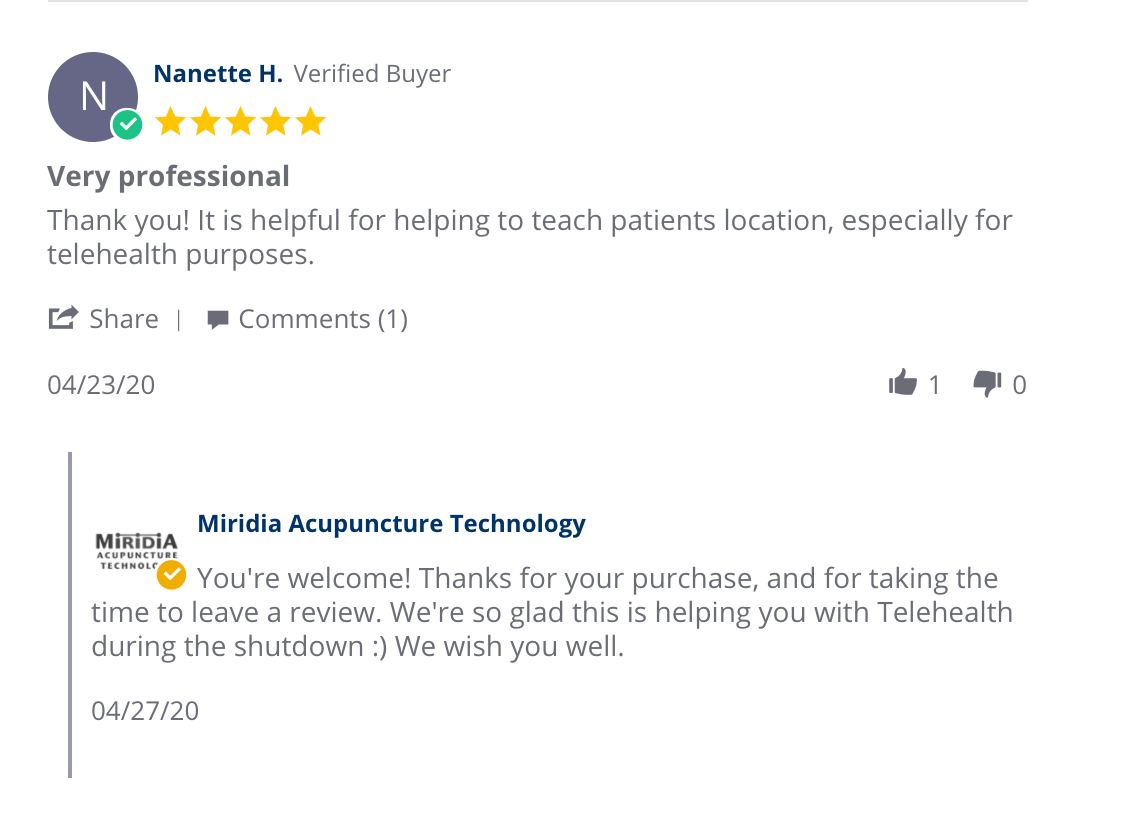
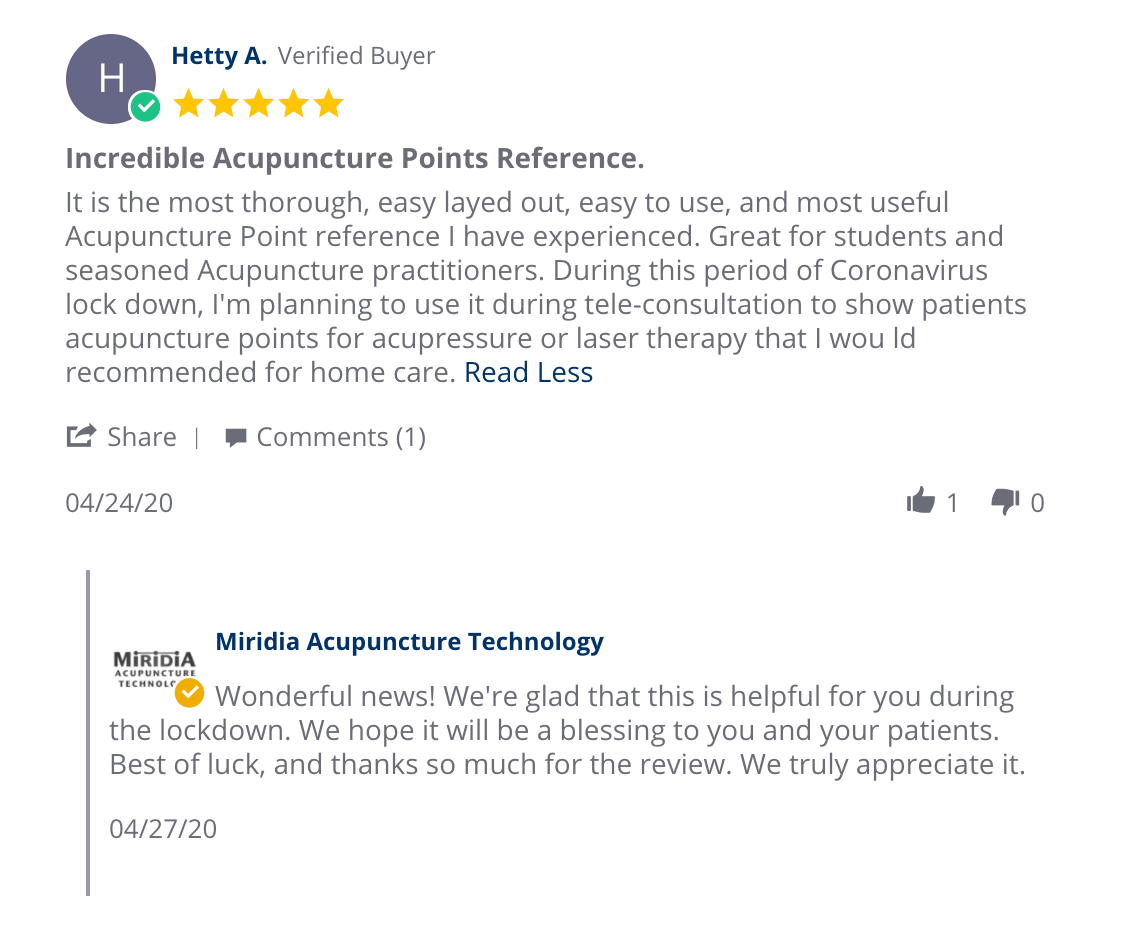
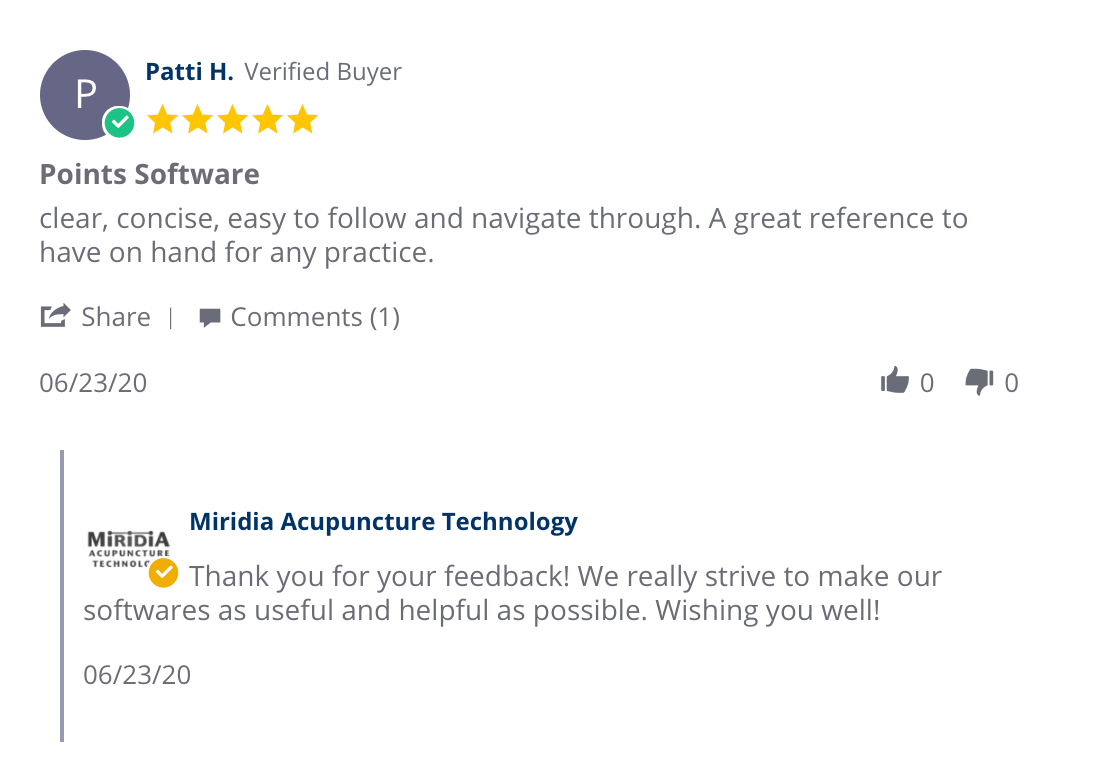
My opinion: One of the best features of POINTS is that it is both professional and easy to use, suitable for experienced practitioners as well as people with no experience in acupuncture.
Conclusion
Learning about the vast sea of acupoints as well as their functions can be incredibly overwhelming. However, POINTS presents all this knowledge in a simple, user-friendly way. This software may of great value to anyone – from people wanting to help themselves or others improve their condition, to students and professional practitioners of acupuncture or acupressure, and anyone with an interest in ancient healing techniques. I love this app and would recommend it to anyone.
Available from Miridia Acupuncture Technology
Share Your Thoughts
If the POINTS software appeals to you and you are considering getting it or recommending it to someone, let me know in the comments below and feel free to ask any questions. If you aleeday own the software I would love to hear how it’s been orking for you and what your protocols you have found most effective.
Other posts you may like:
- Best Handheld Percussion Massager
- How to Relieve Chronic Back Pain
- Nada Chair Review
- 10 Things to Do When Feeling Down
Explore more products at Miridia Acupuncture Technology

BY LUCIE DUN
This site has been built with DIVI, by Elegant Themes.
Learn about ENERGY MEDICINE:
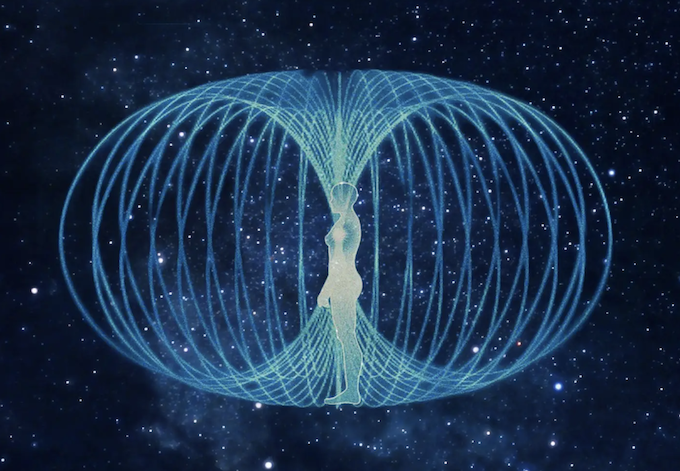
WHAT IS ENERGY MEDICINE
This article explains the concept of energy medicine as an empowering self-care tool. You will also meet one of the most amazing pioneers of this modality, Donna Eden, and learn a simple, yet effective set of techniques called The Daily Energy Routine. This deceptively simple practice has improved the lives of many, mine included. If you’d like to have more energy, stronger immune system, and balanced emotions, I highly recommend checking it out.
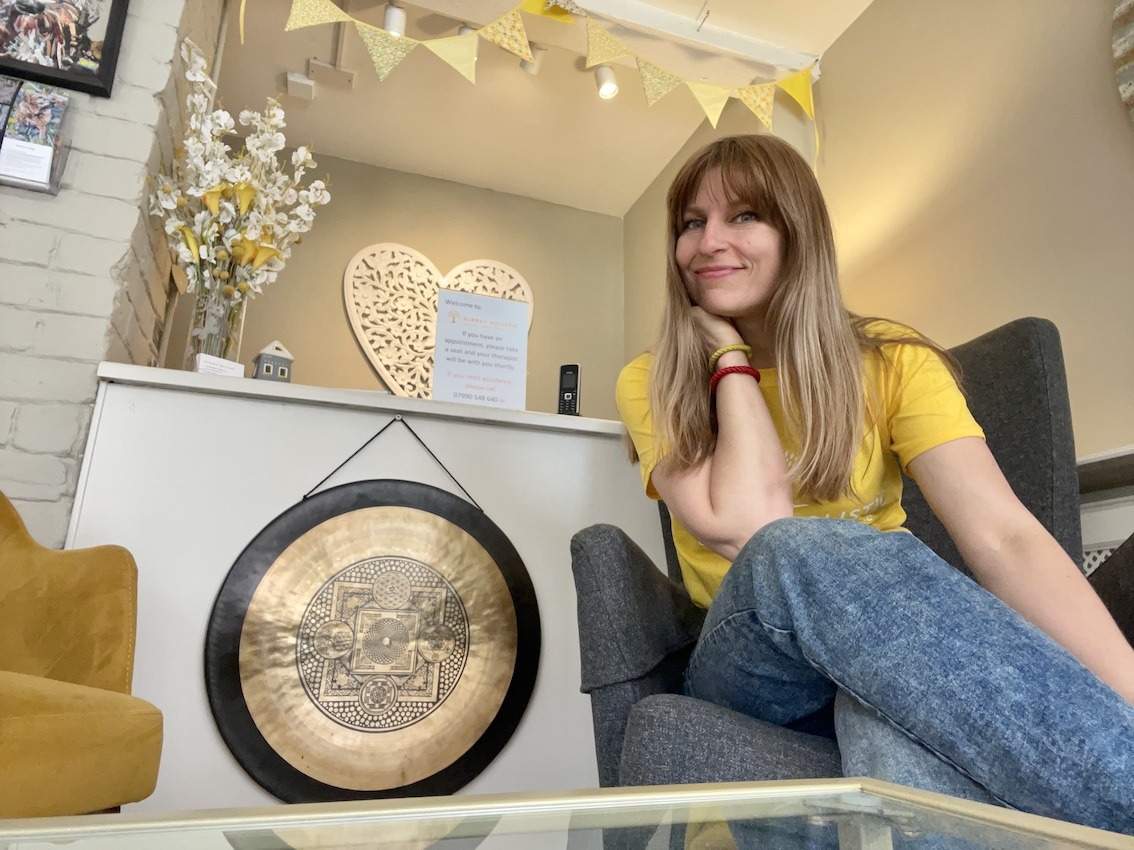
MY JOURNEY TO ENERGY MEDICINE
Read about my personal journey to energy medicine, how it improved my health and emotional well-being, and why I decided to become an Eden Energy Medicine Clinical Practitioner. As a bonus, I have included a link to my meditative track ‘Meridian Affirmations’, to which I am currently offering free streaming.
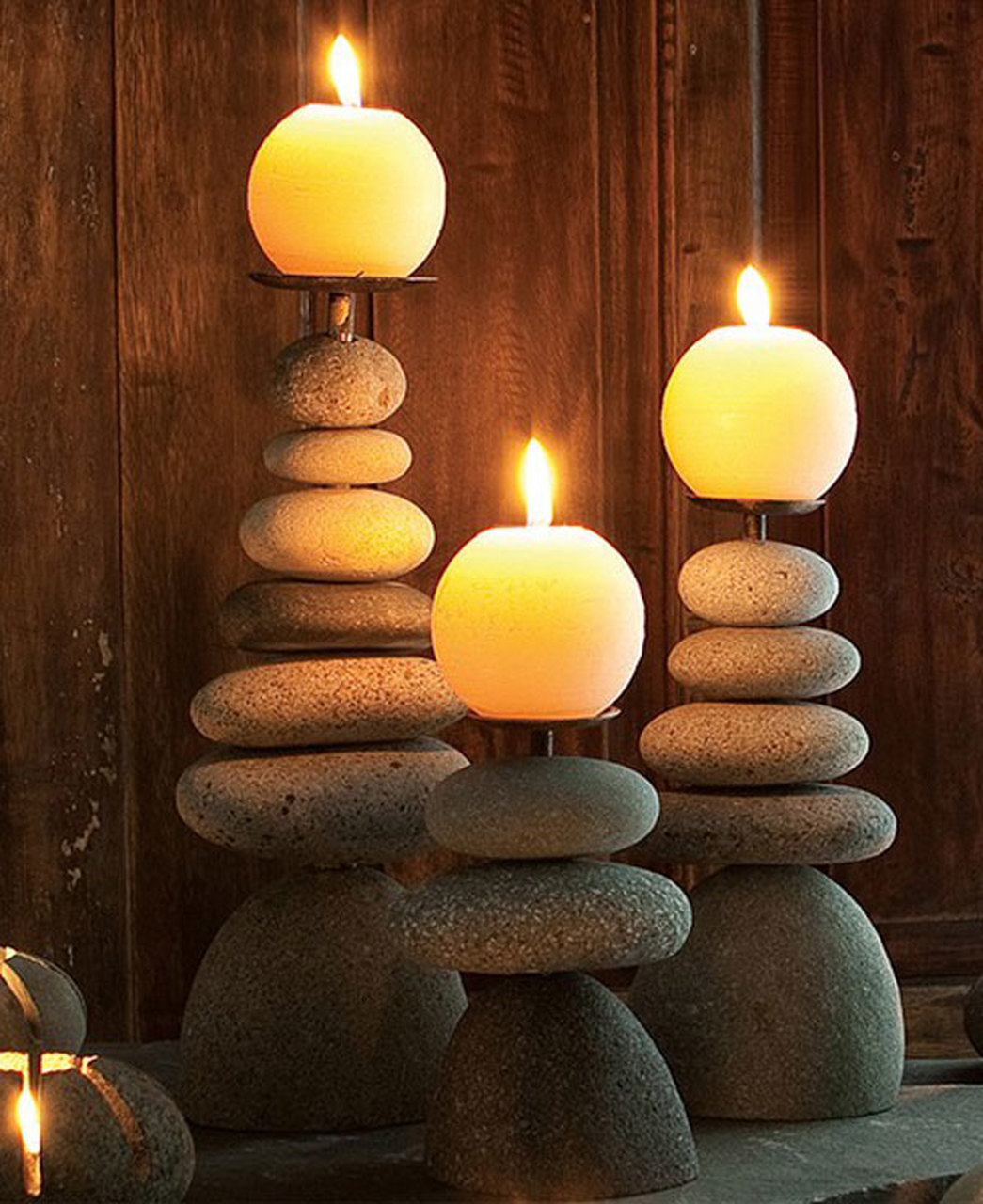
ENERGY MEDICINE TOOLS
On this page, you will find a whole range of useful things for your energy medicine studies or practice – from essential tools for your sessions and self-care to recommended books and apps. If you are new to energy medicine, I recommed visiting the book section and check Donna Eden’s book ‘Energy Medicine’ and ‘Energy Medicine for Women’.
More posts about ENERGY MEDICINE
